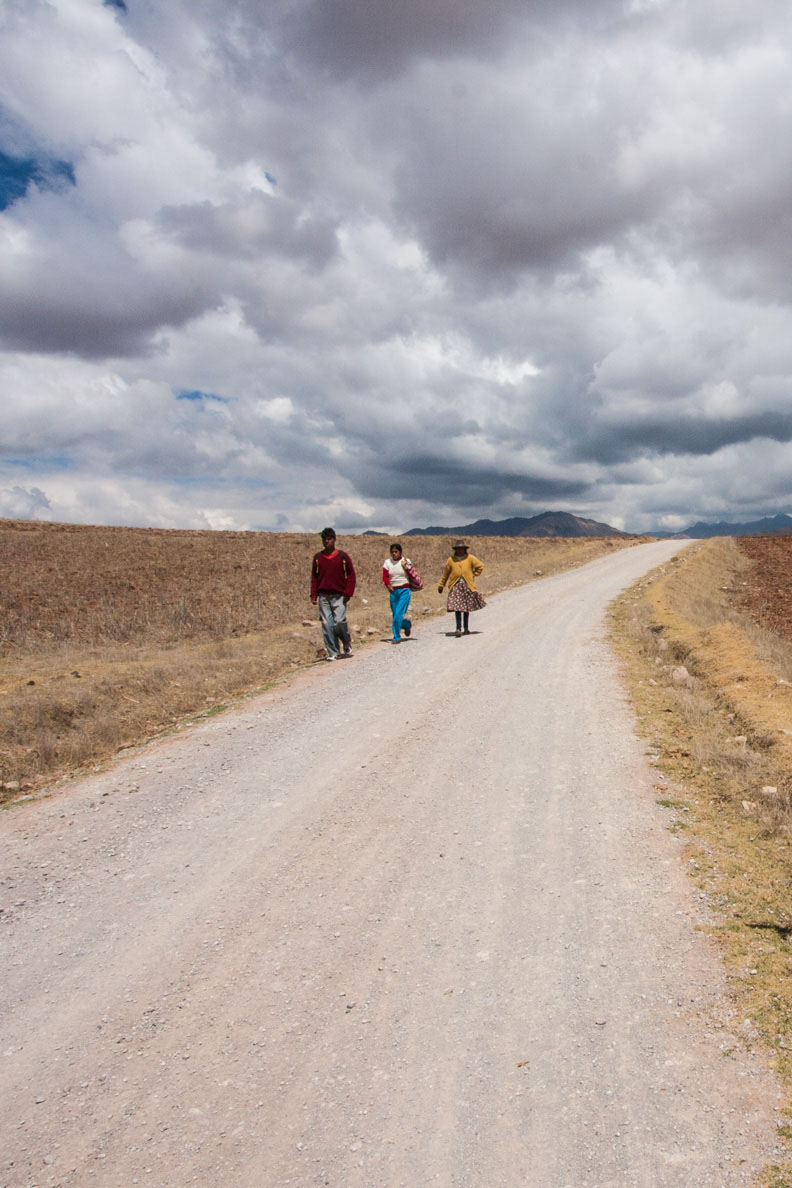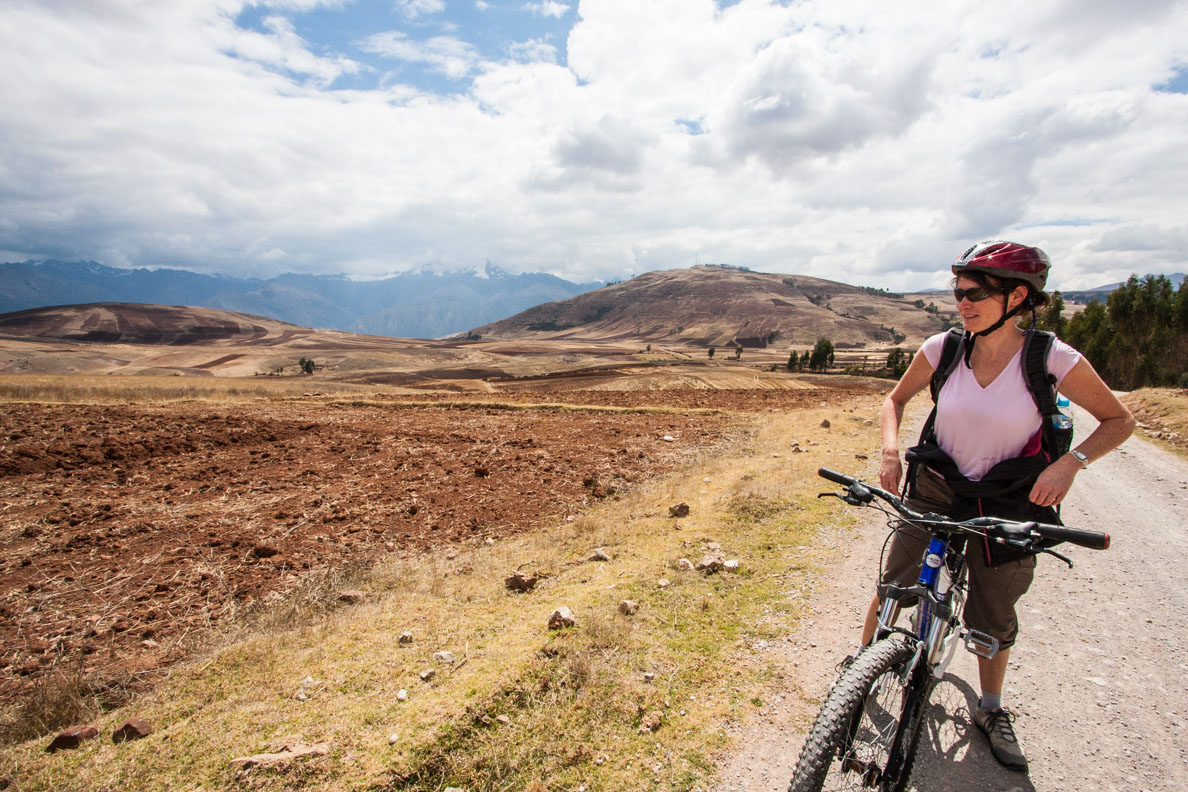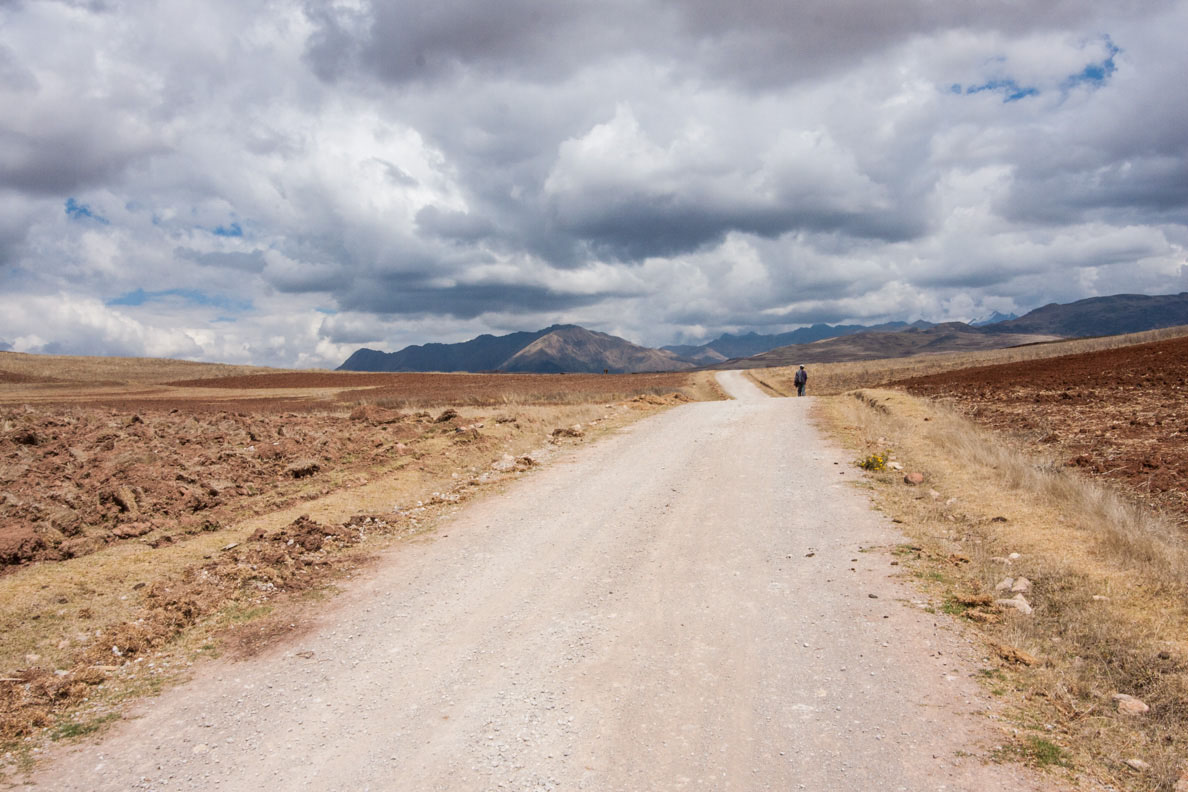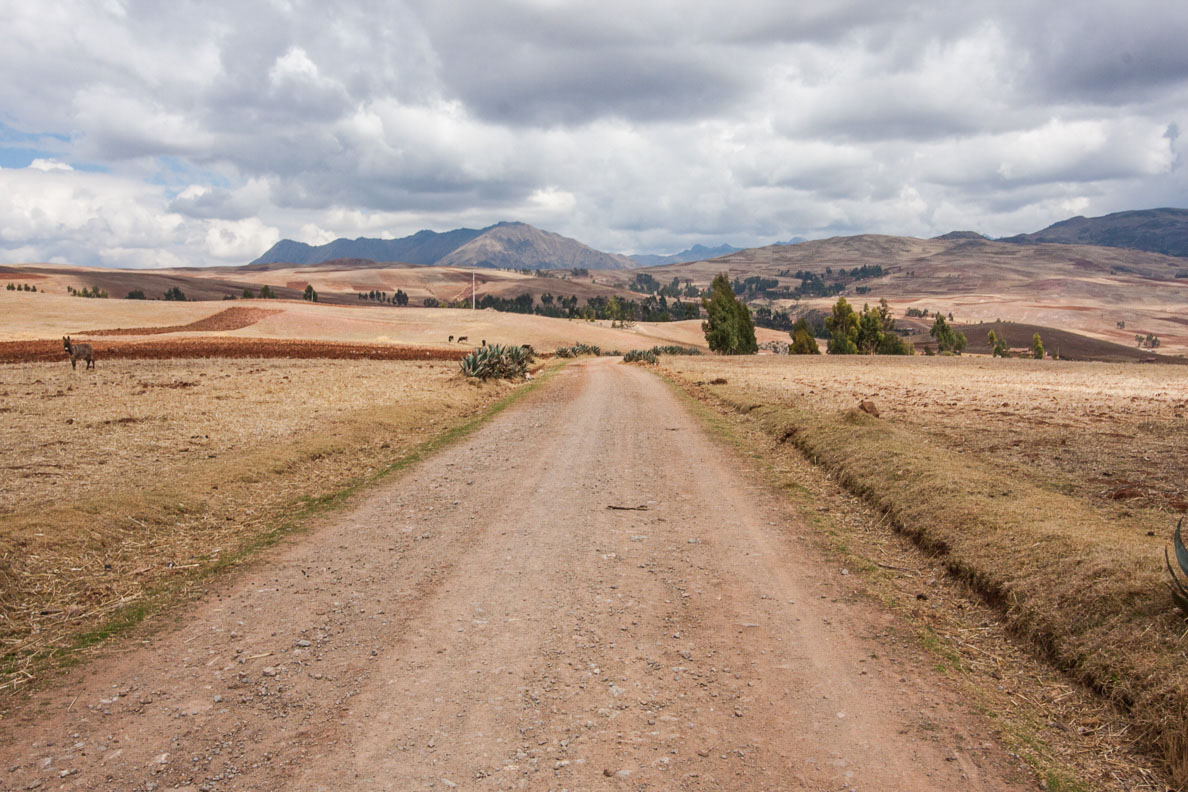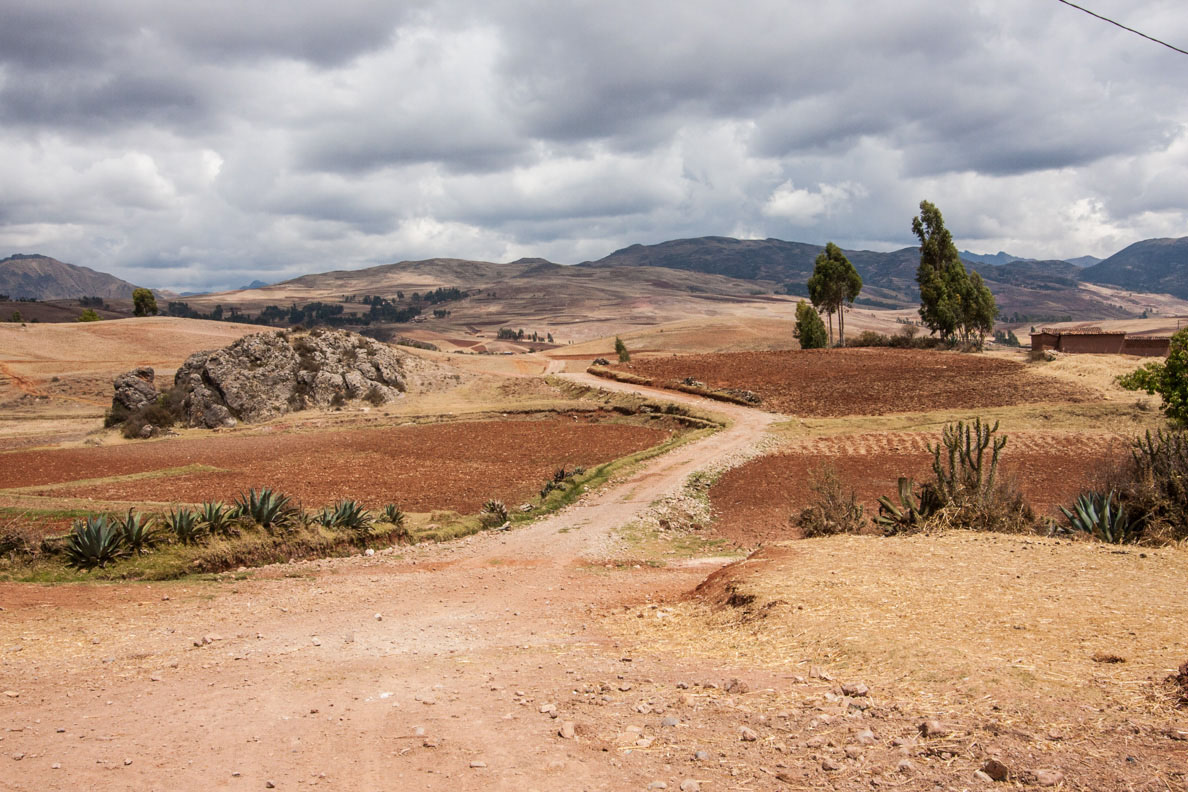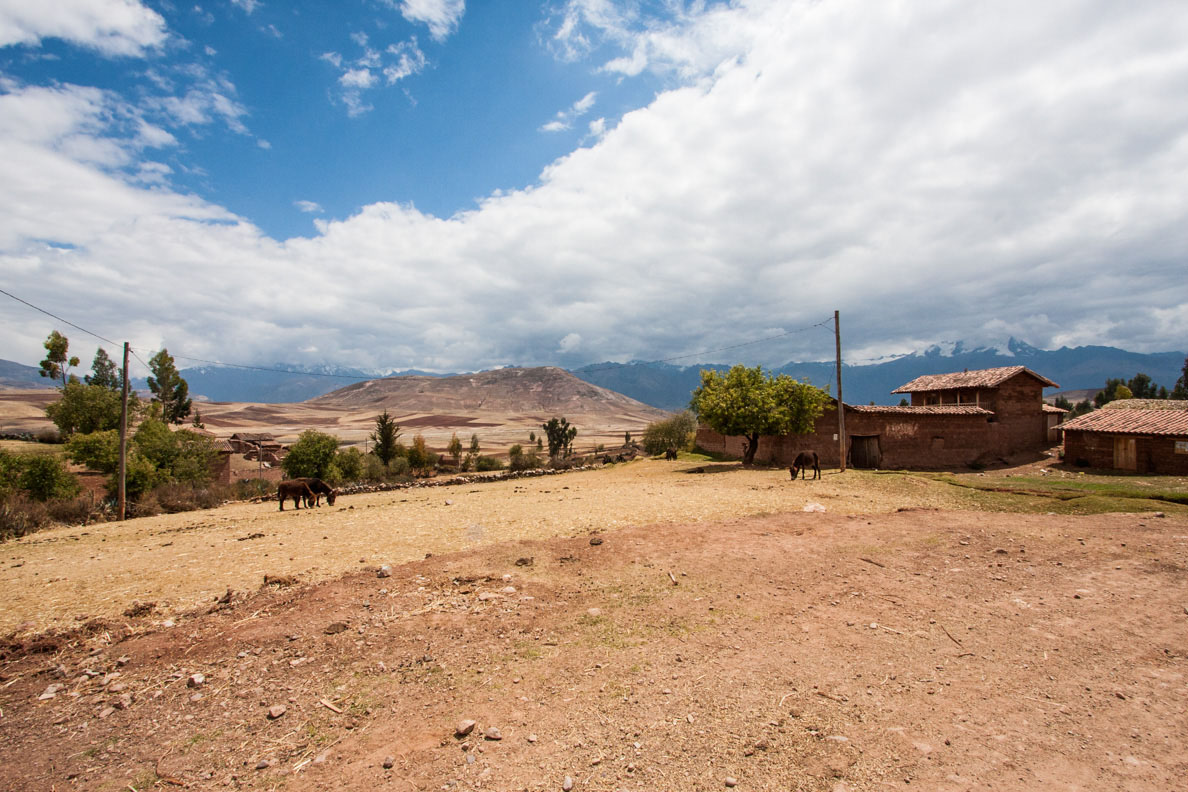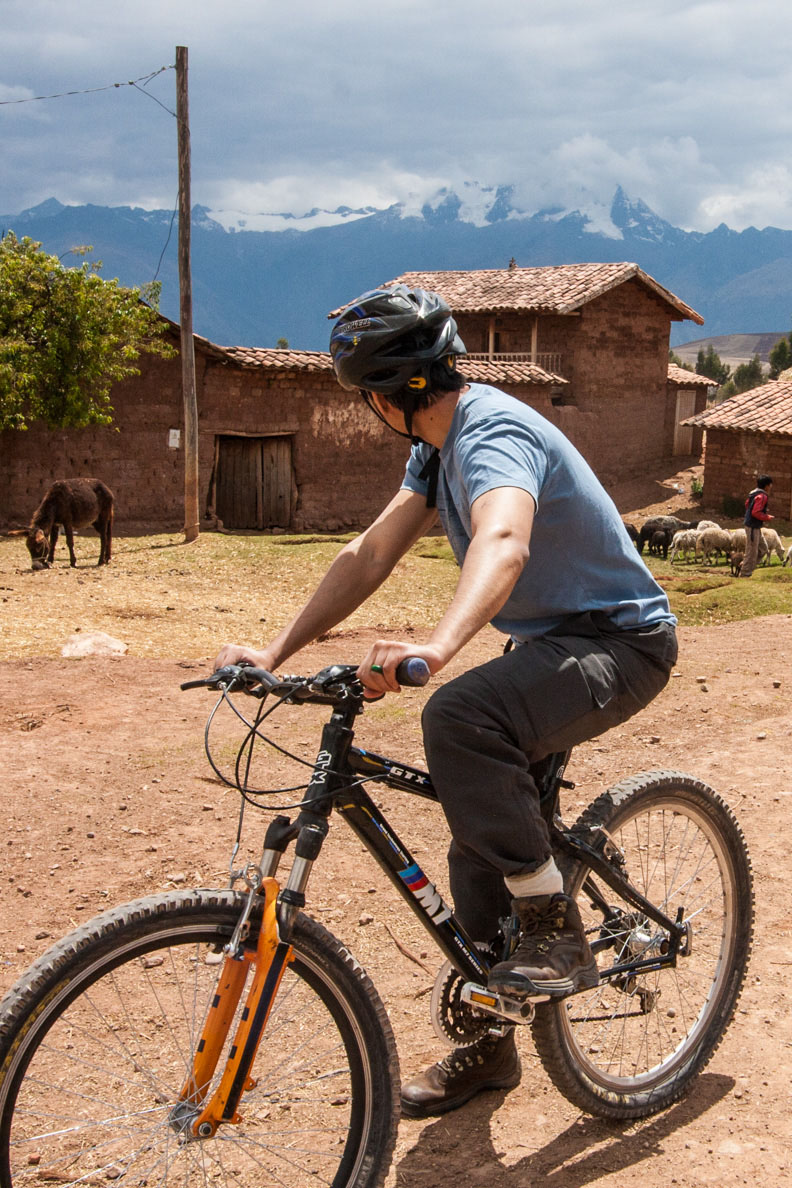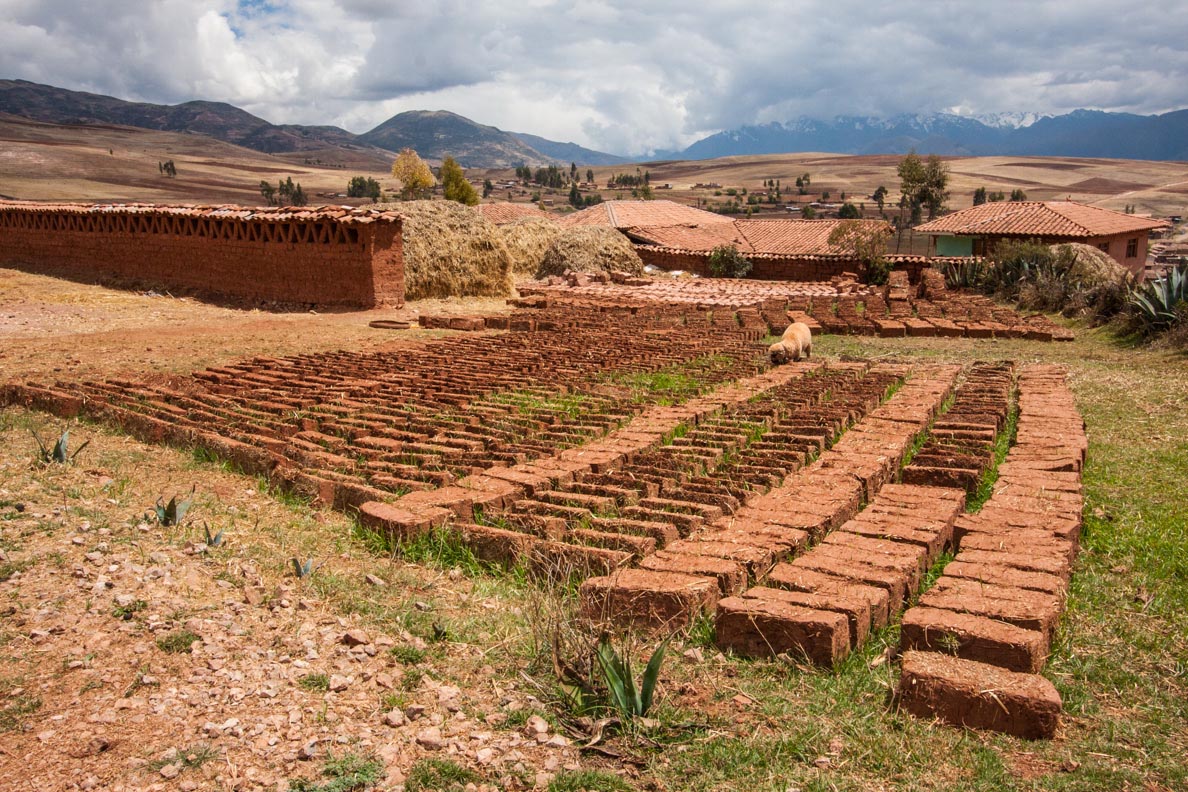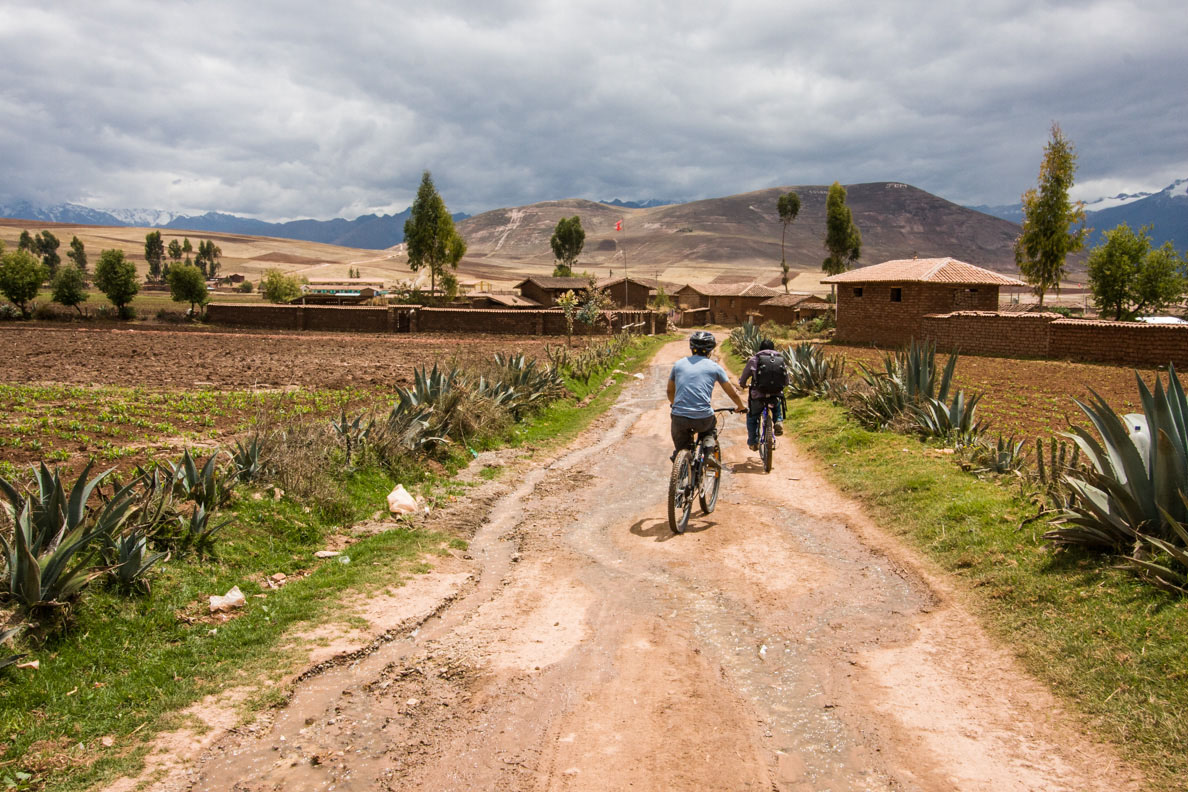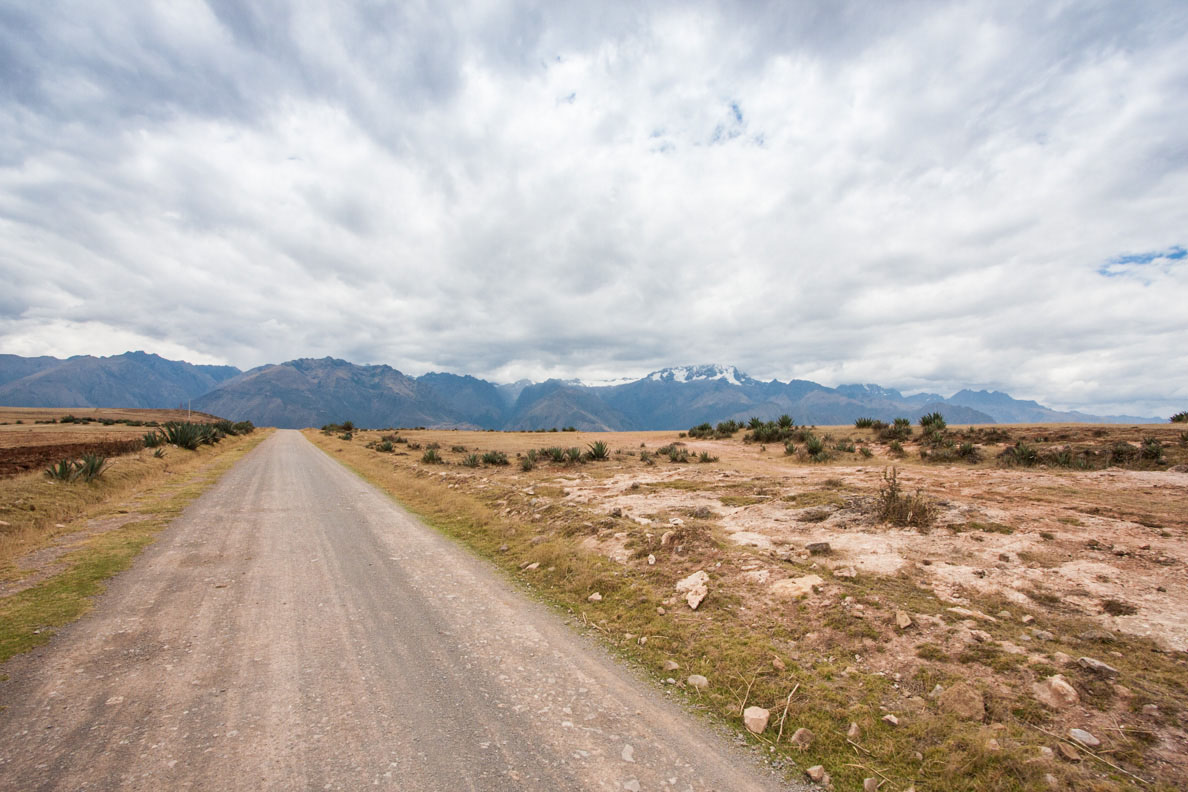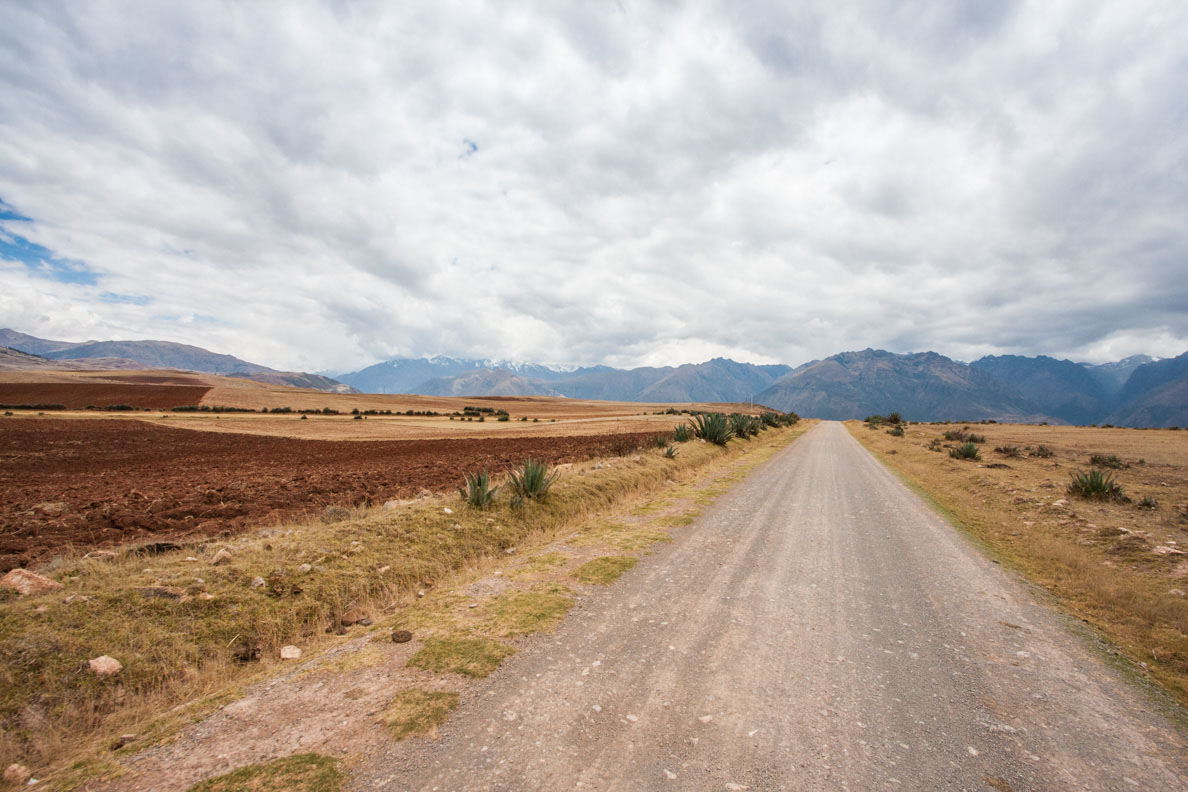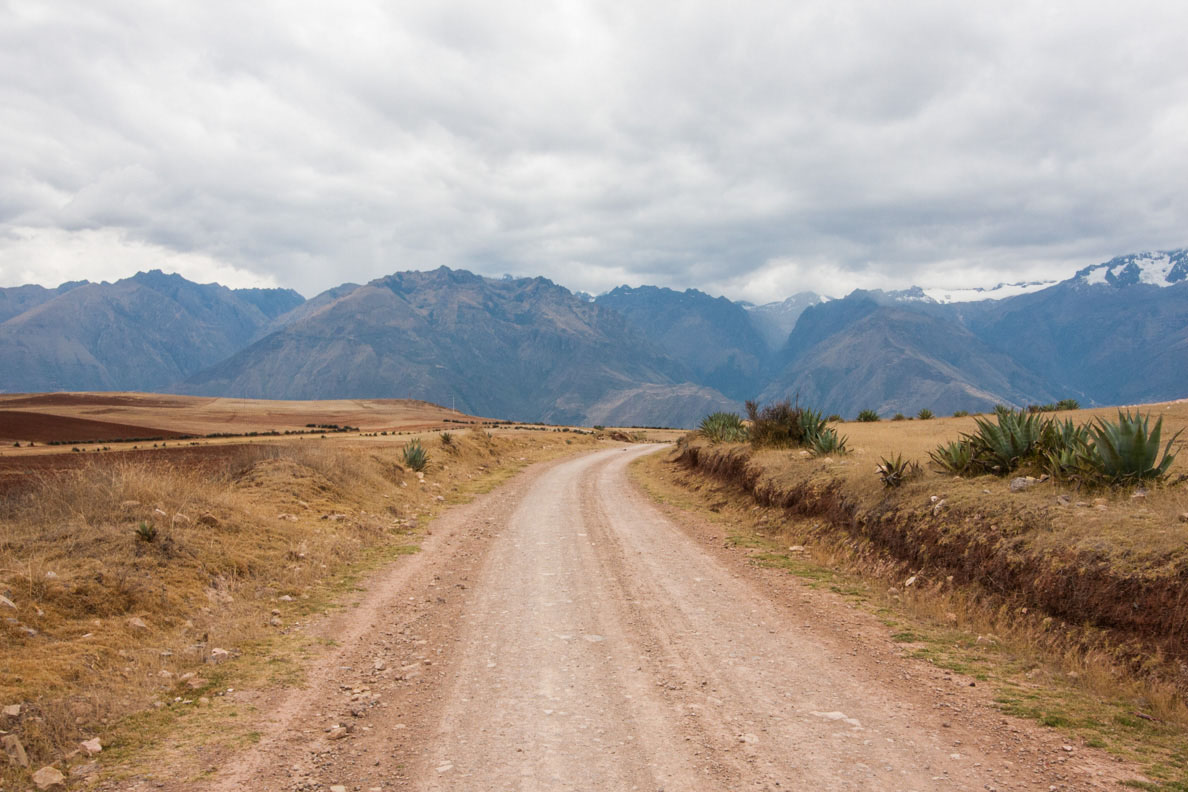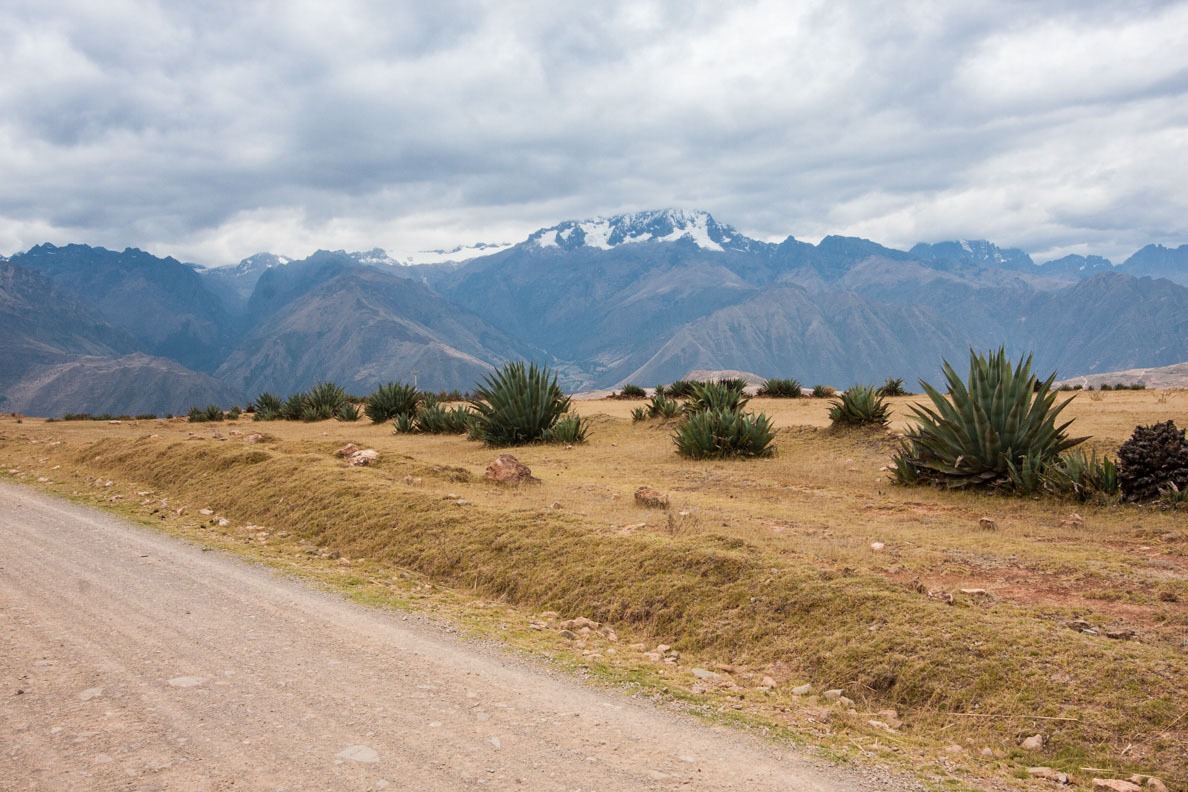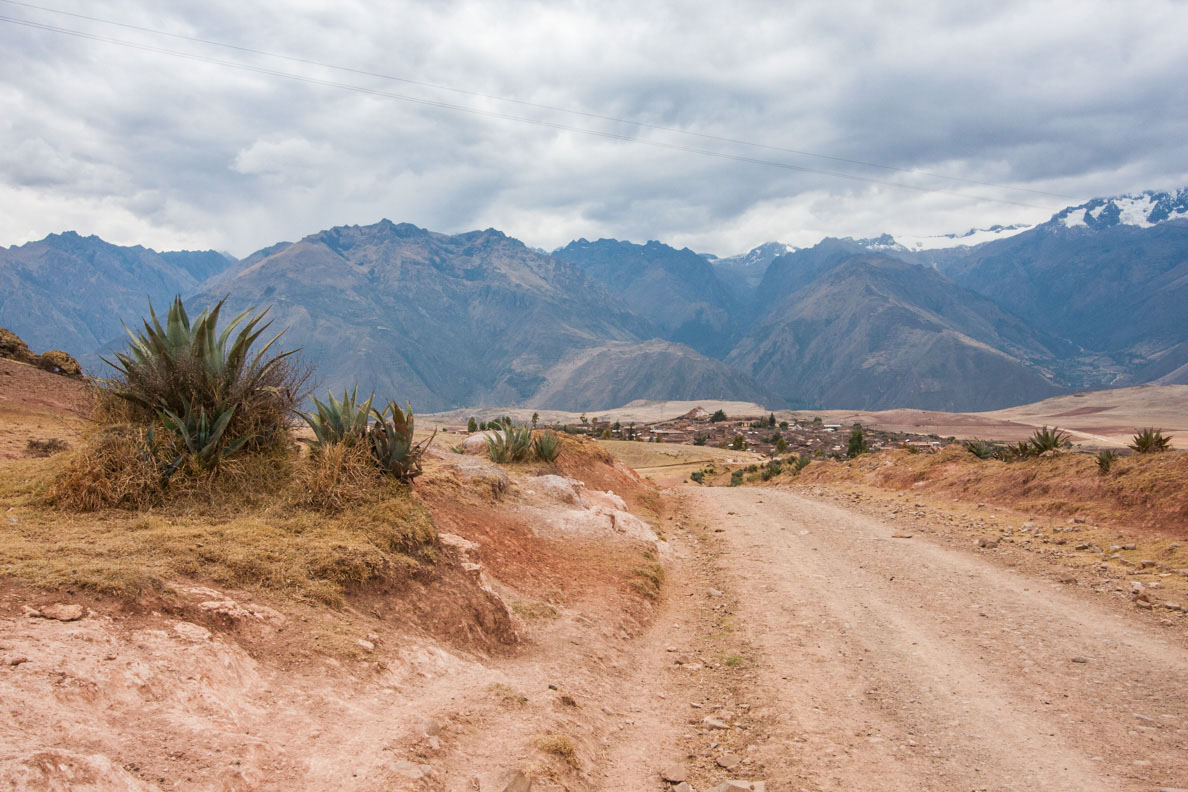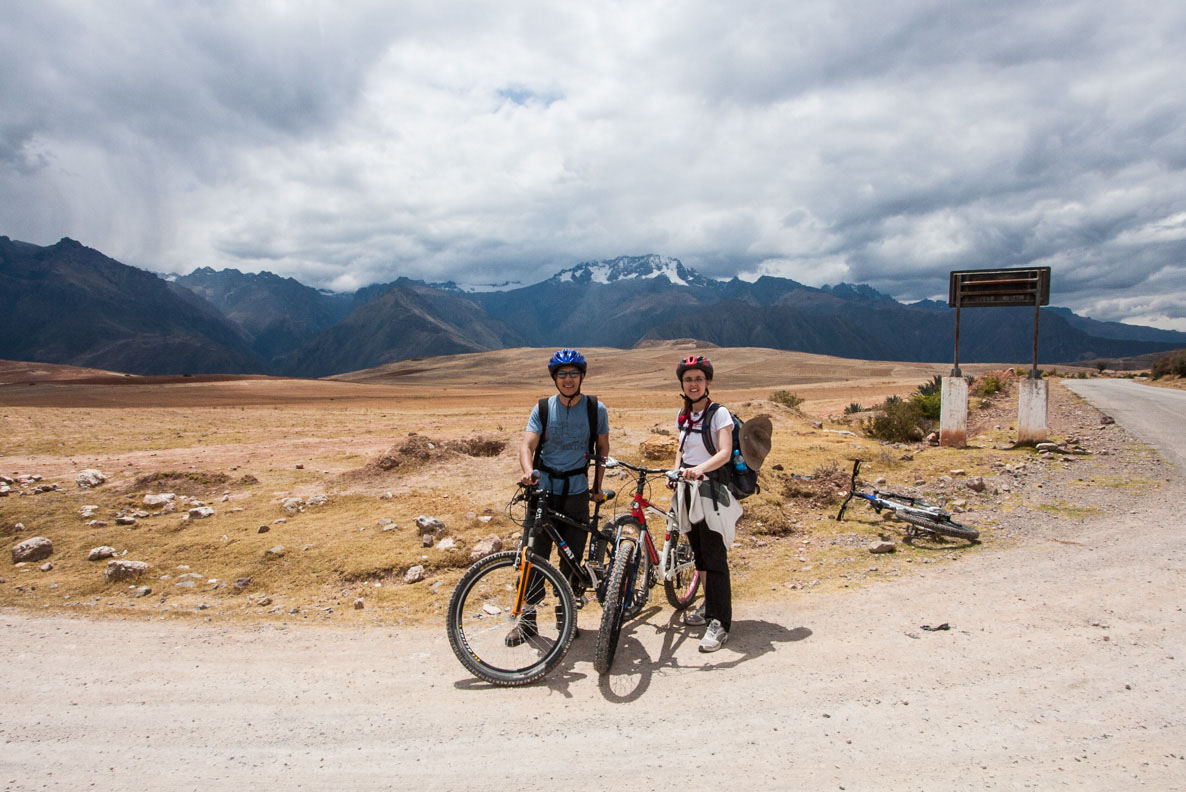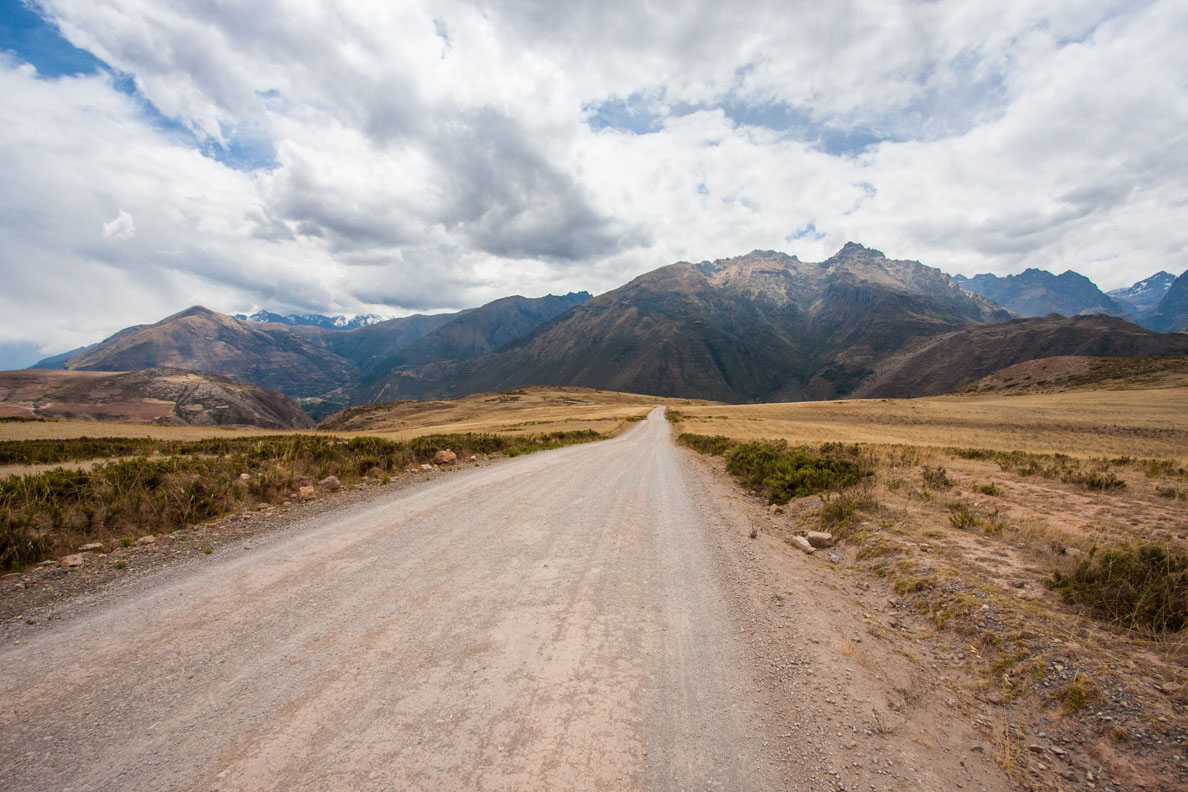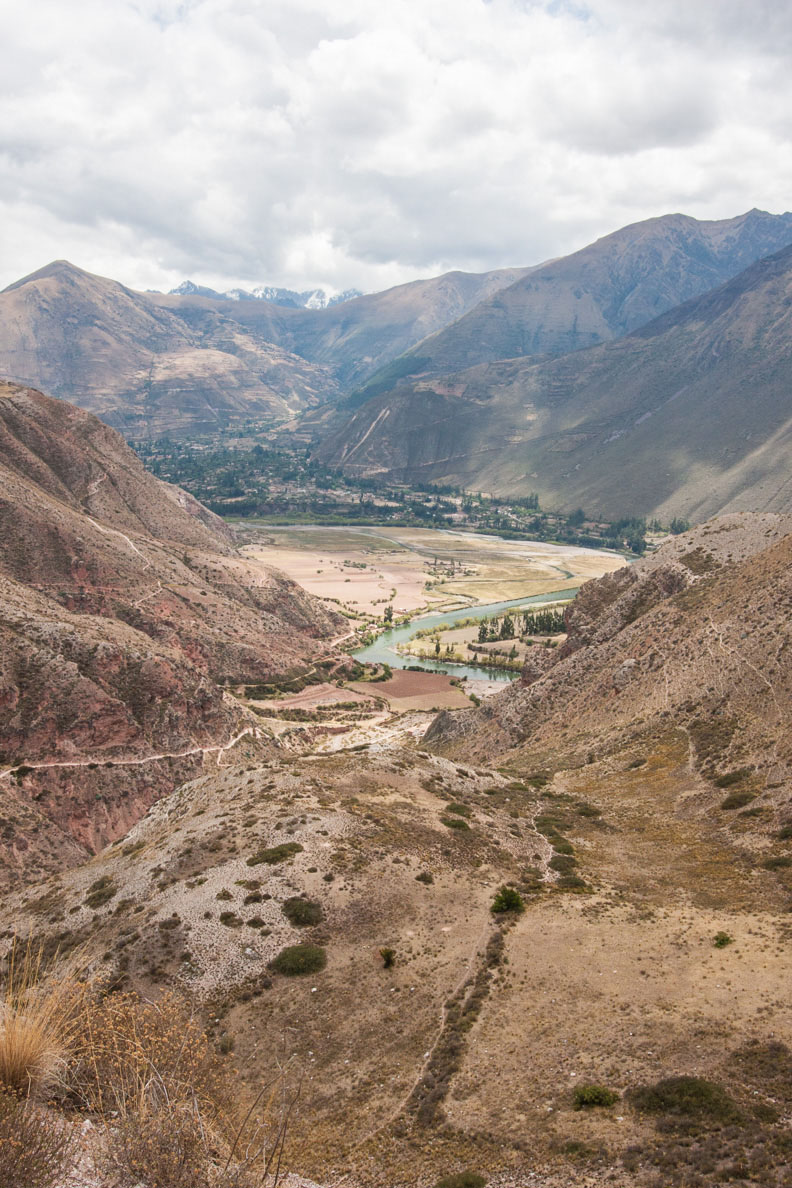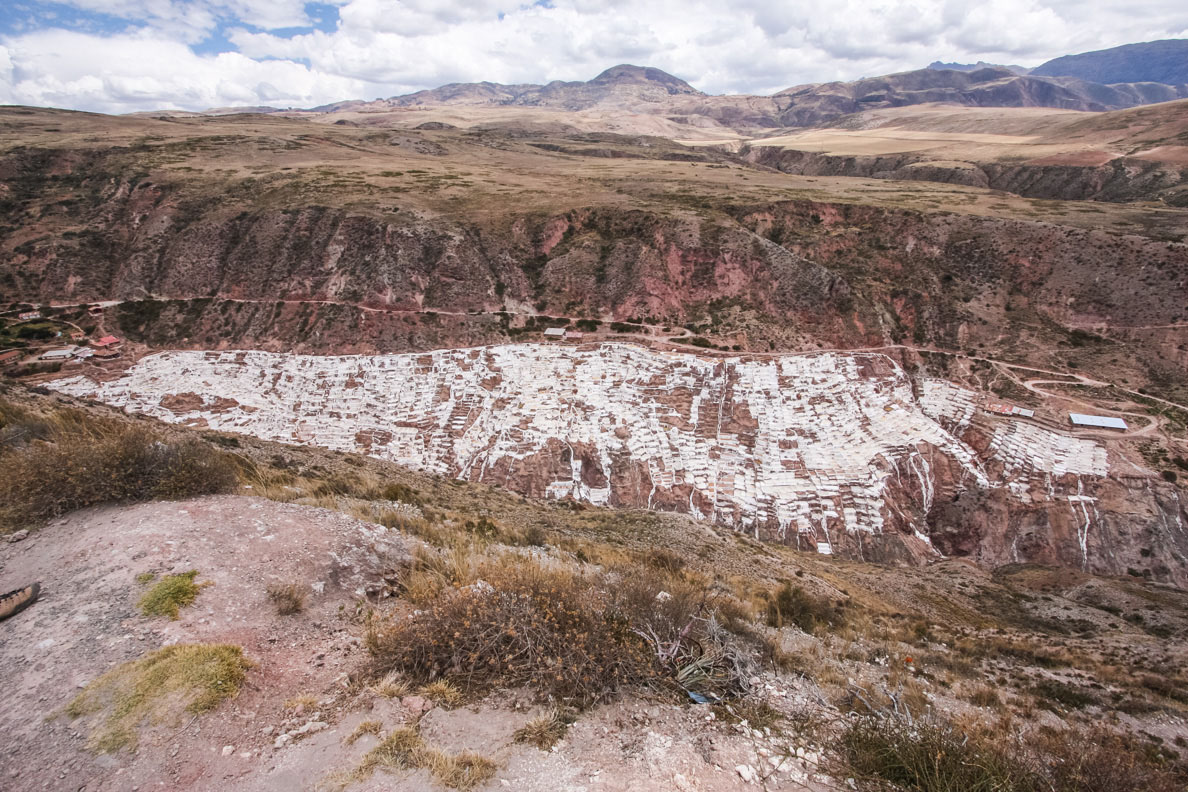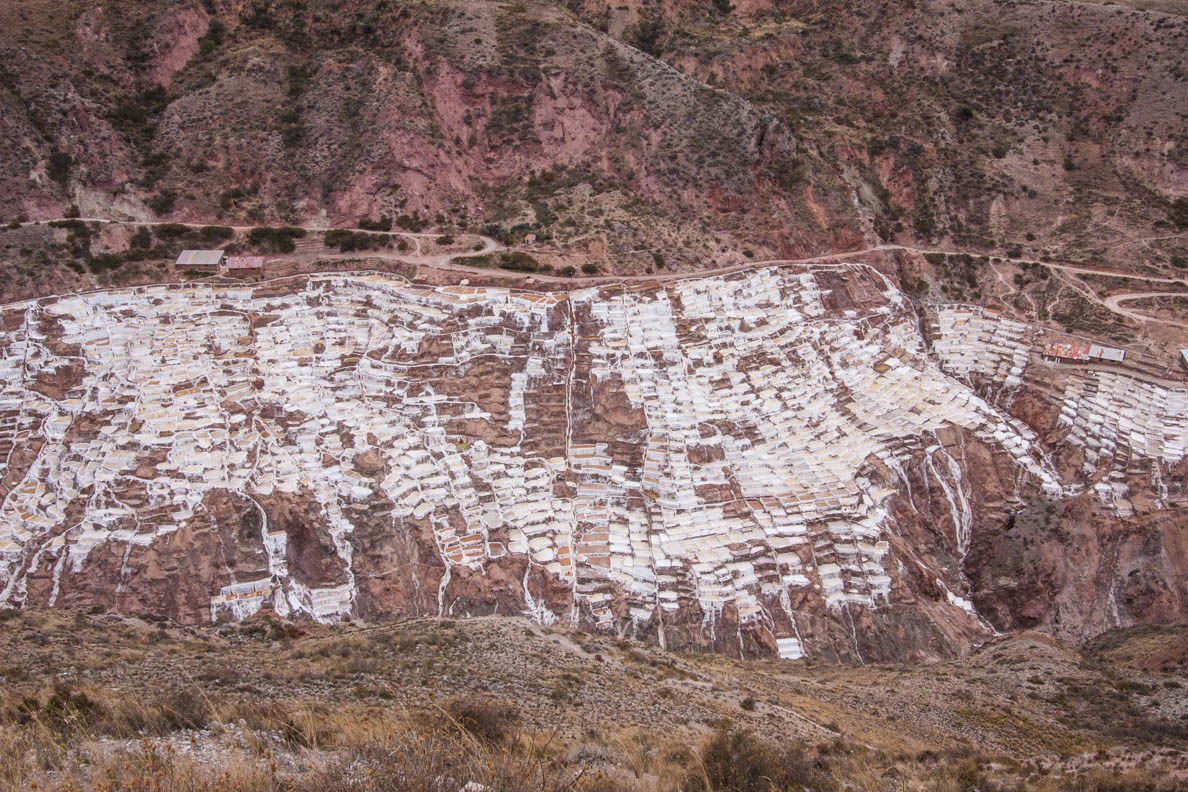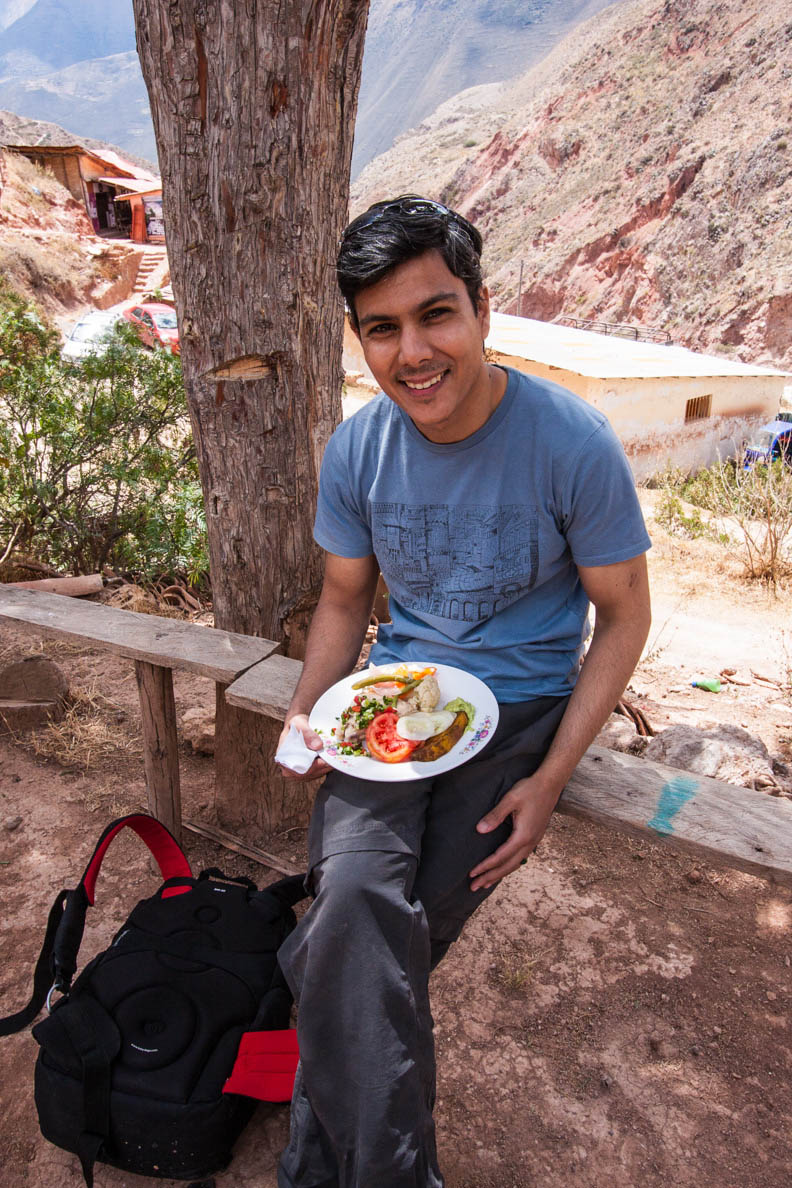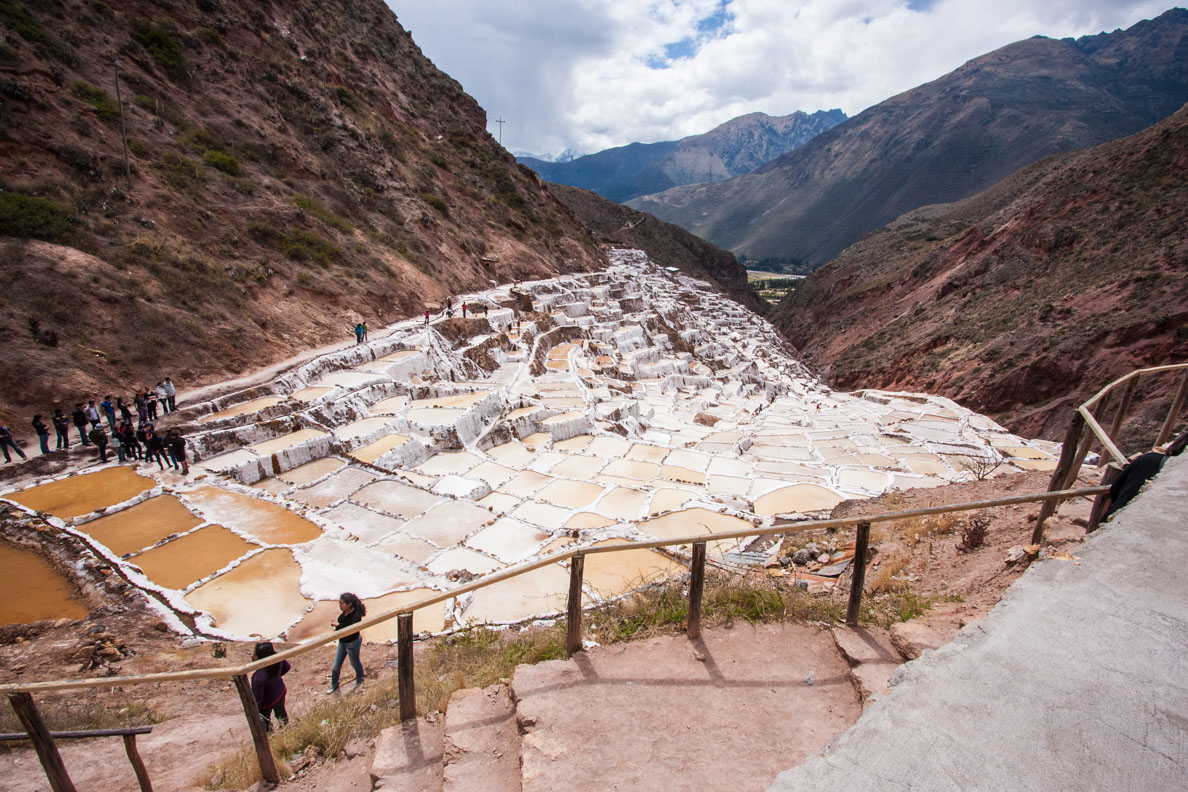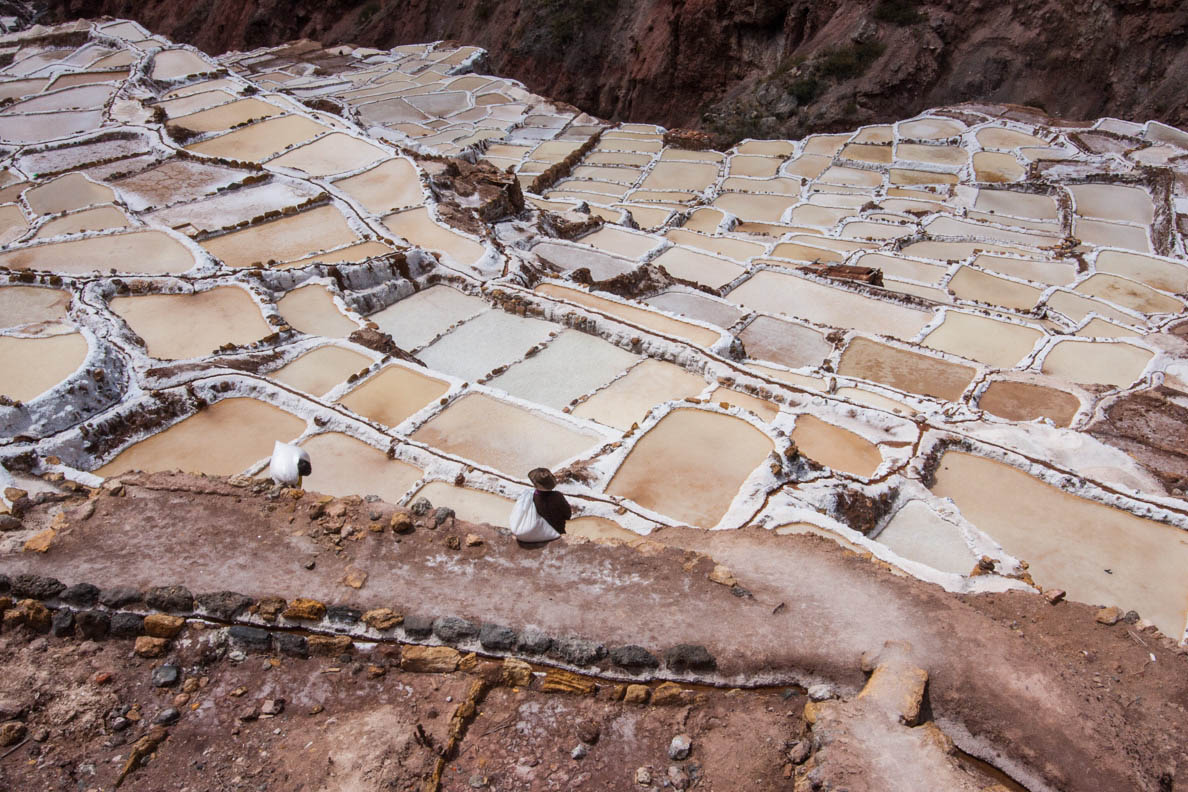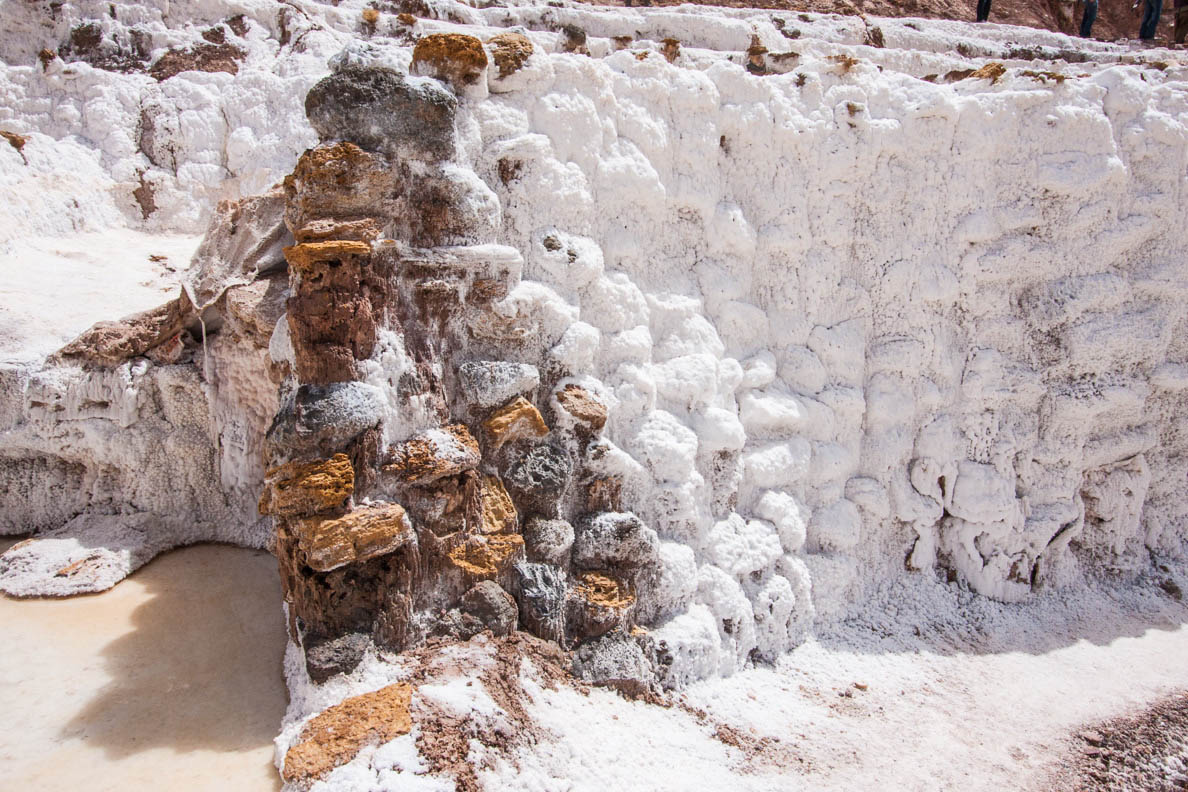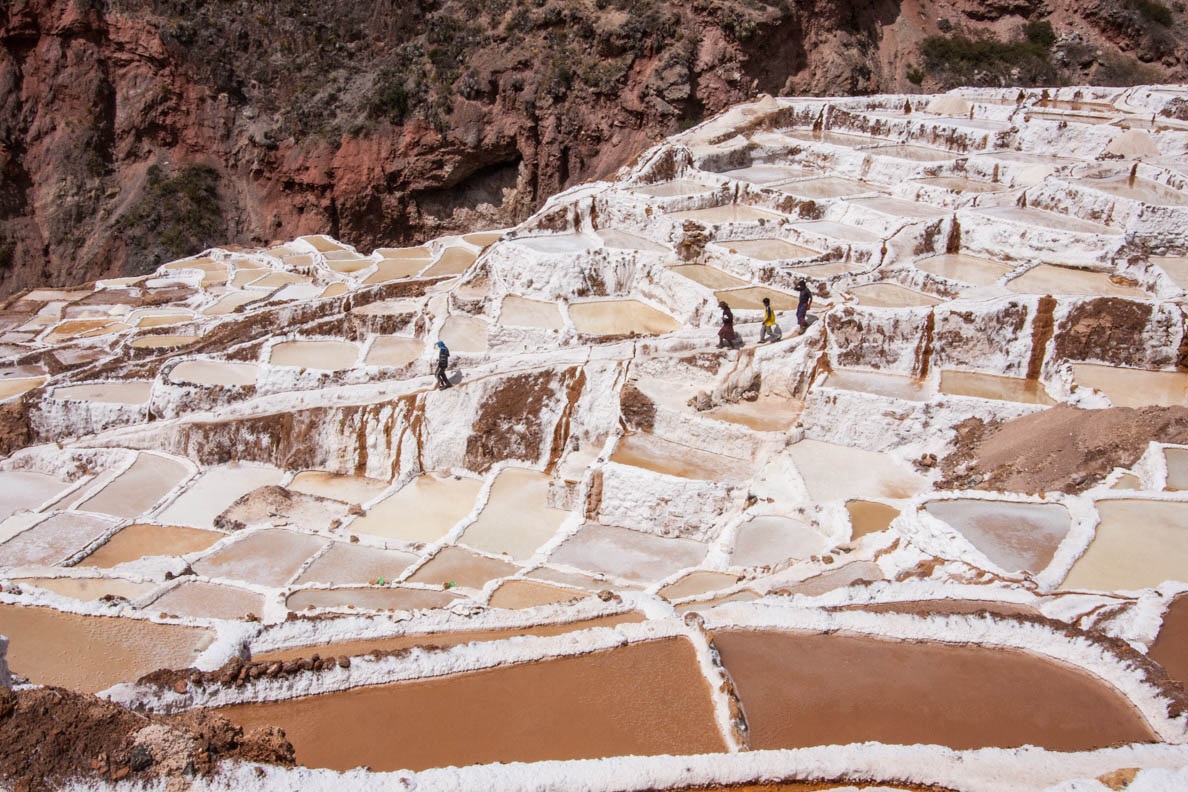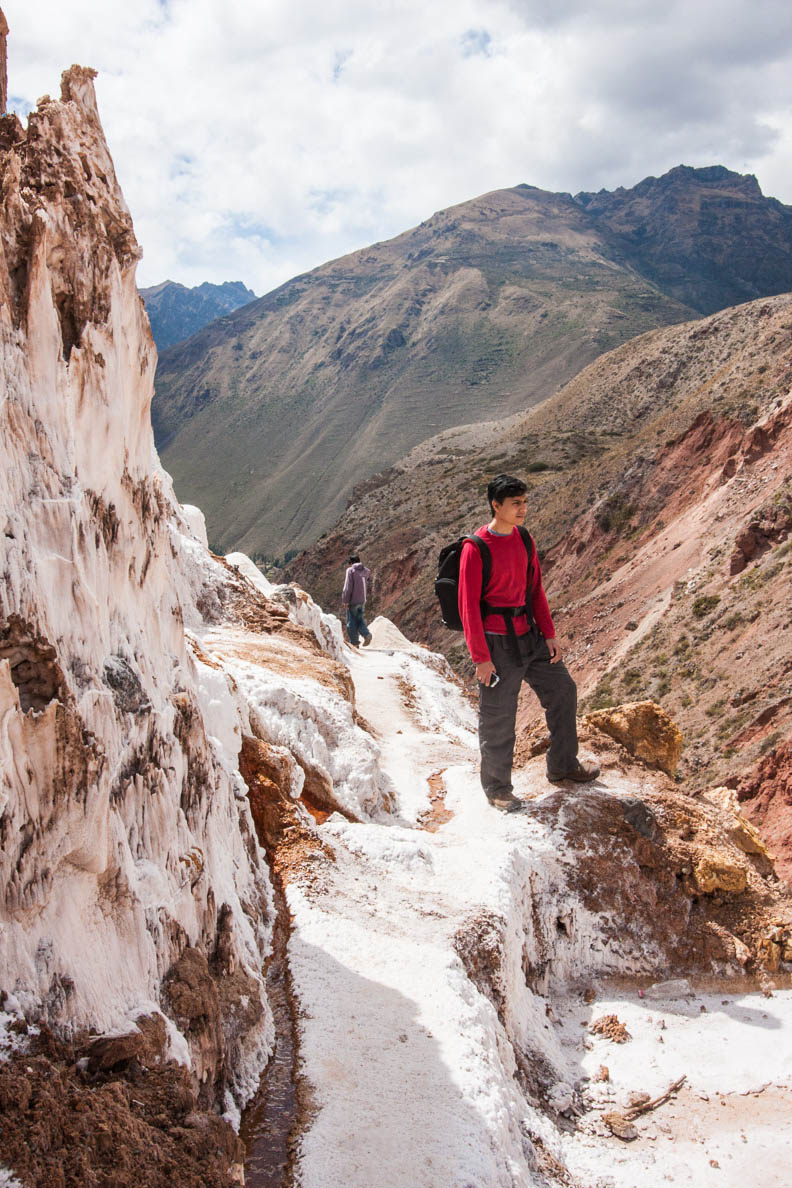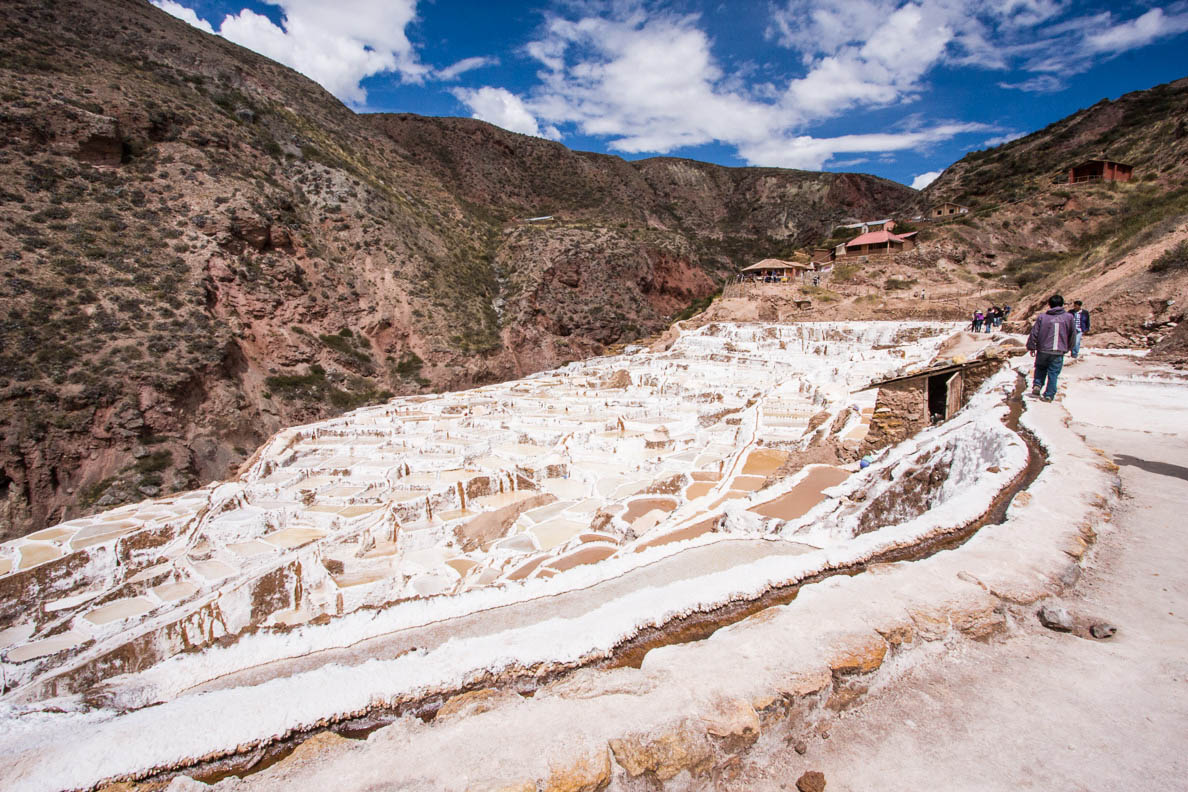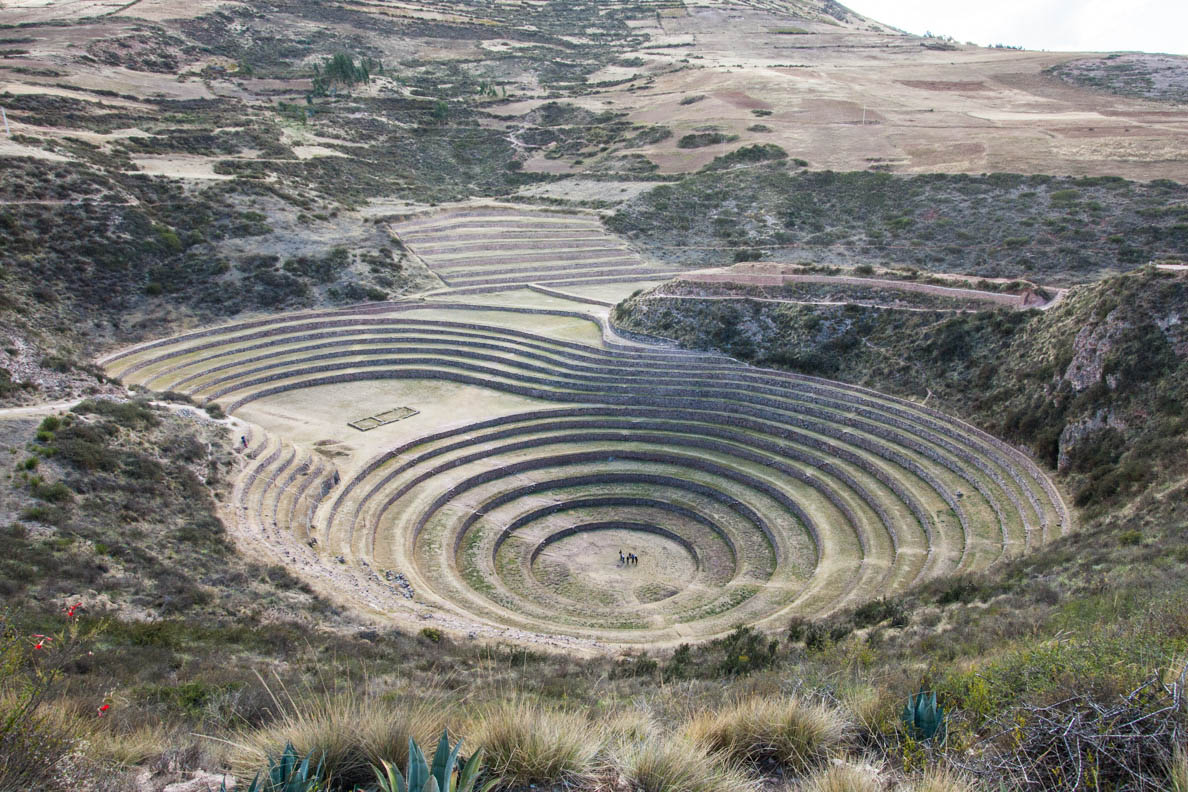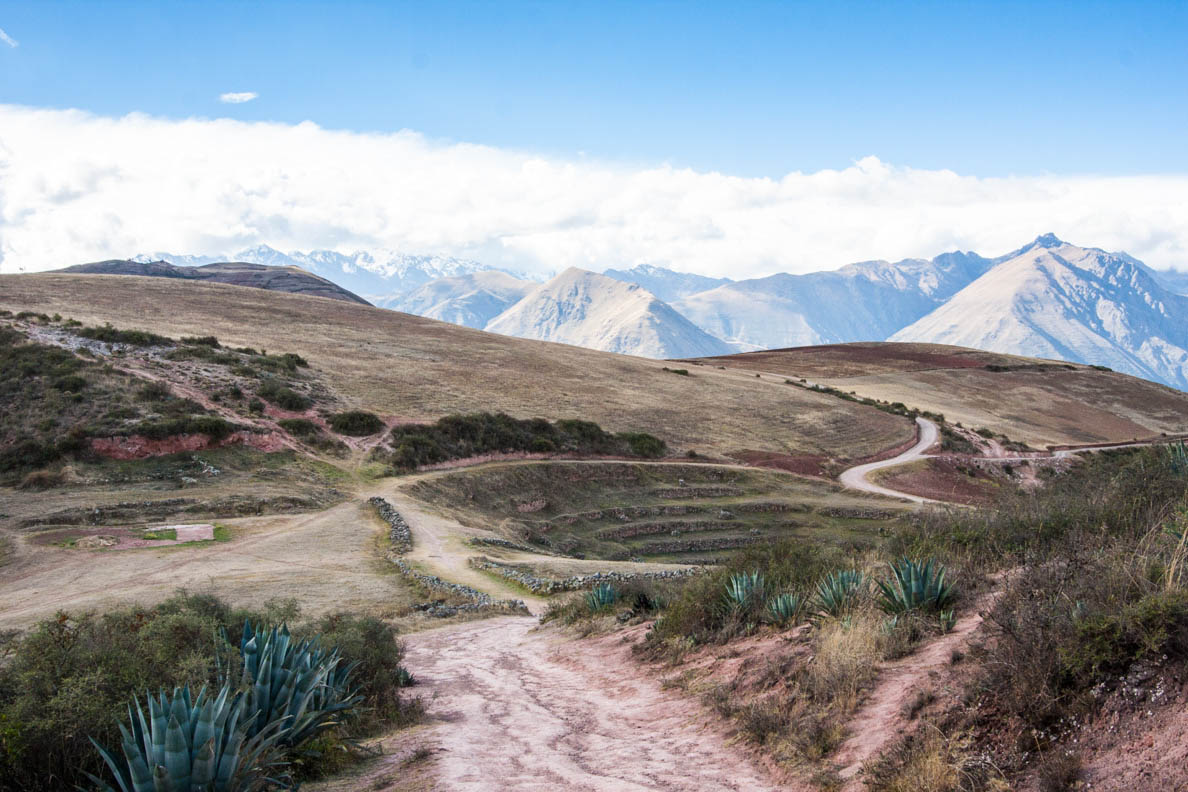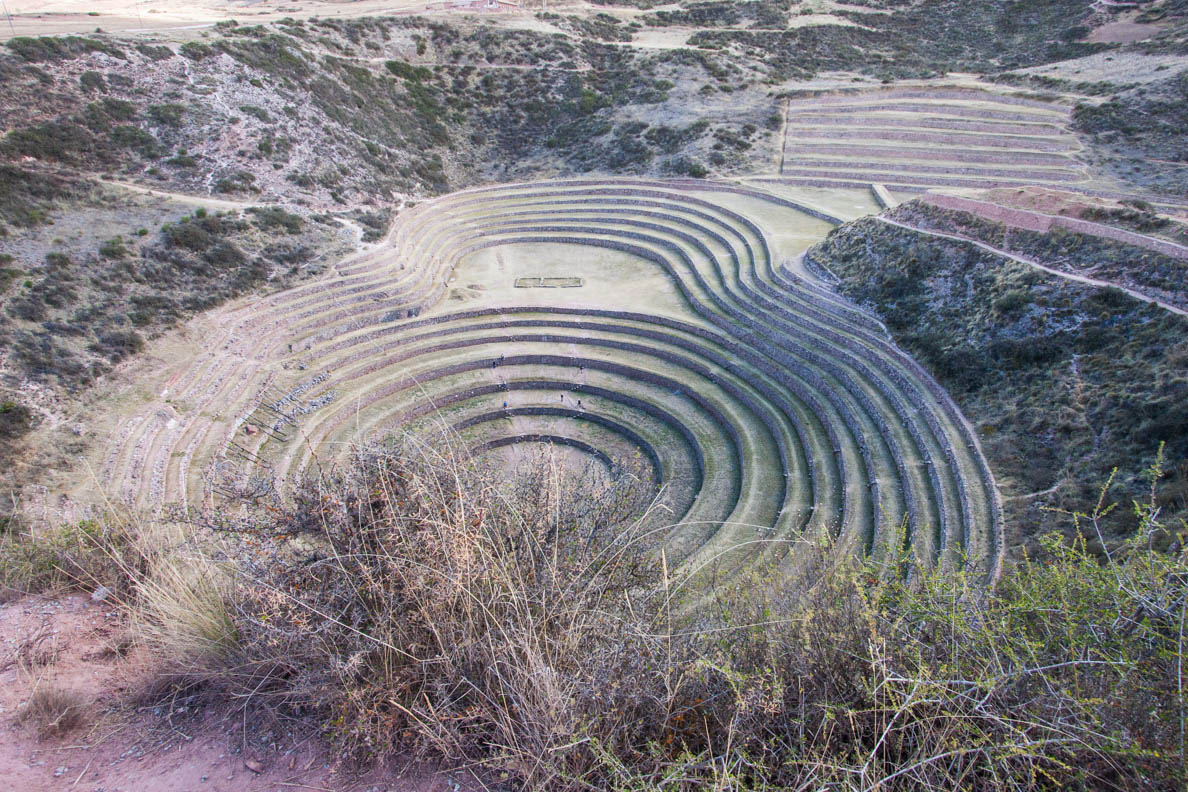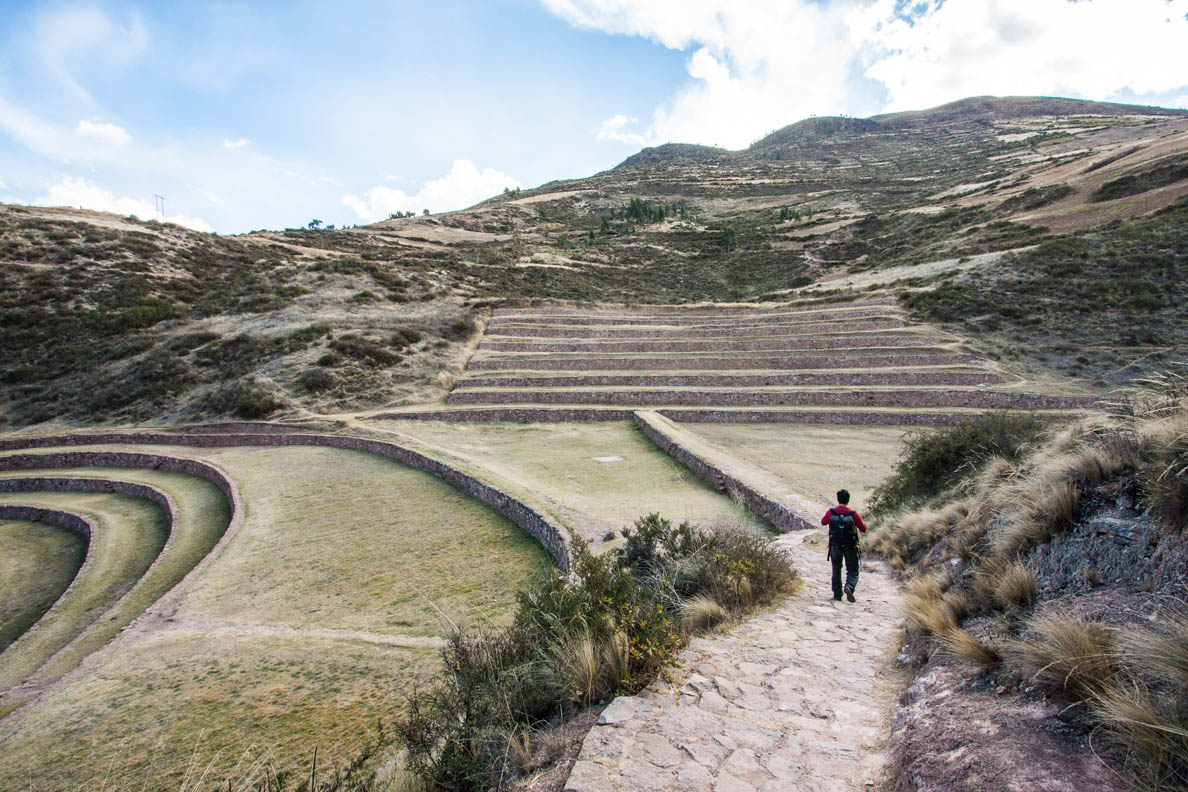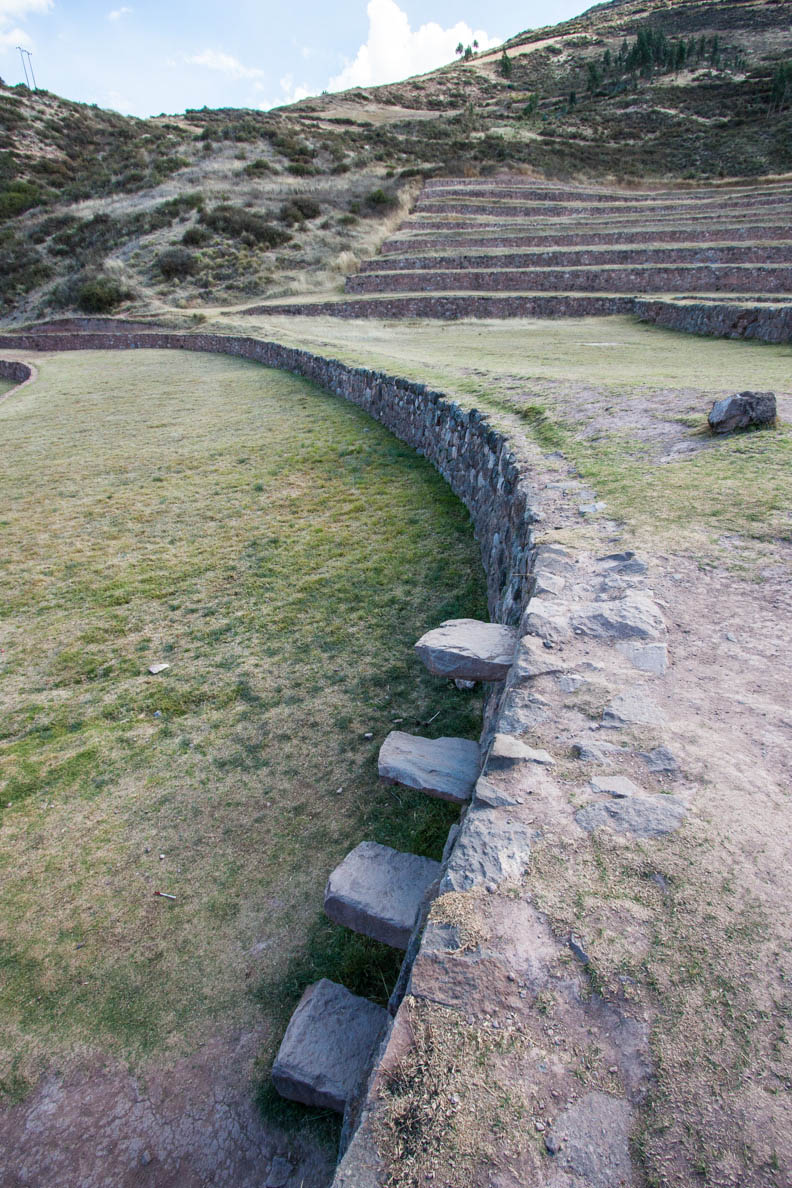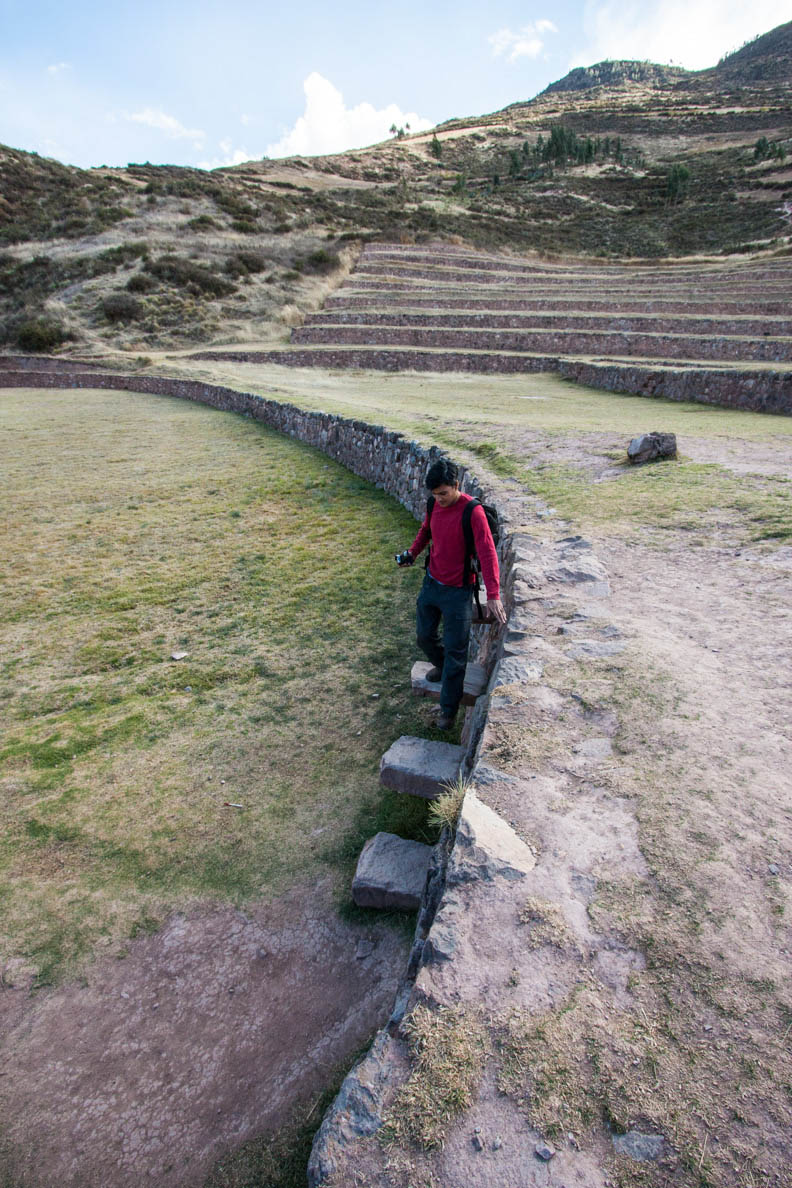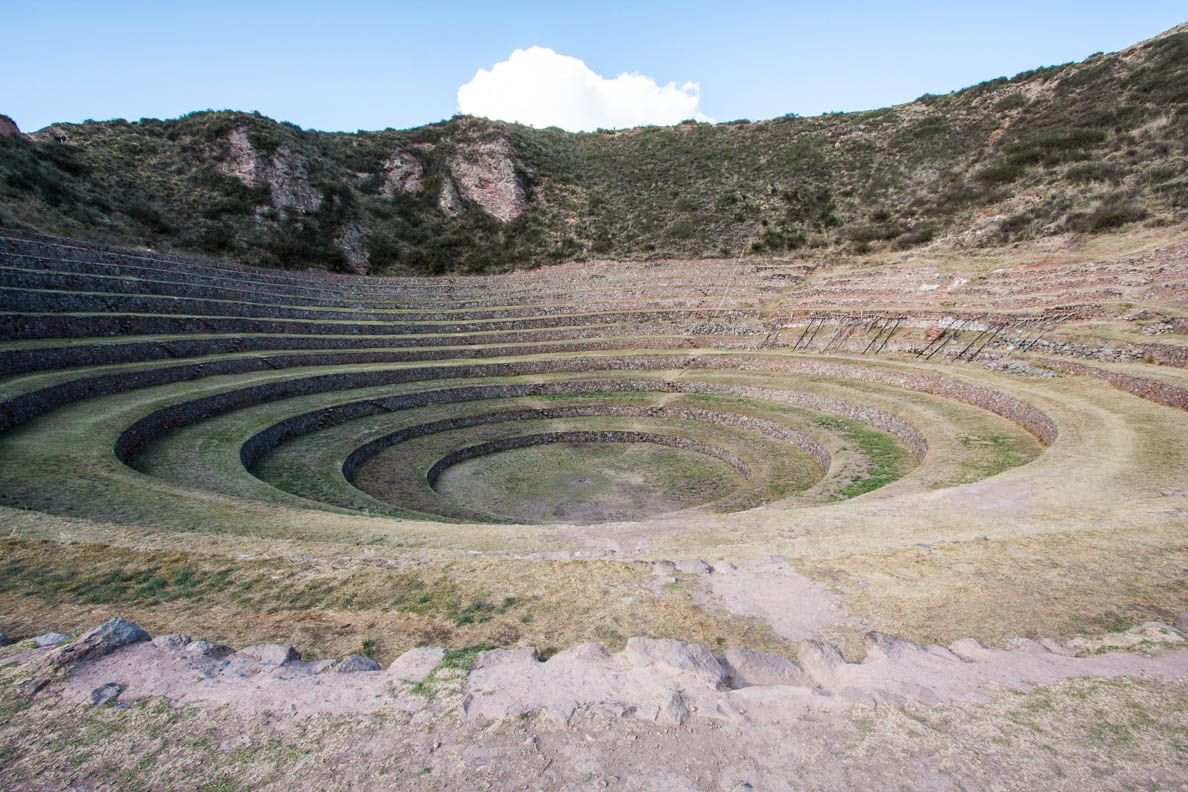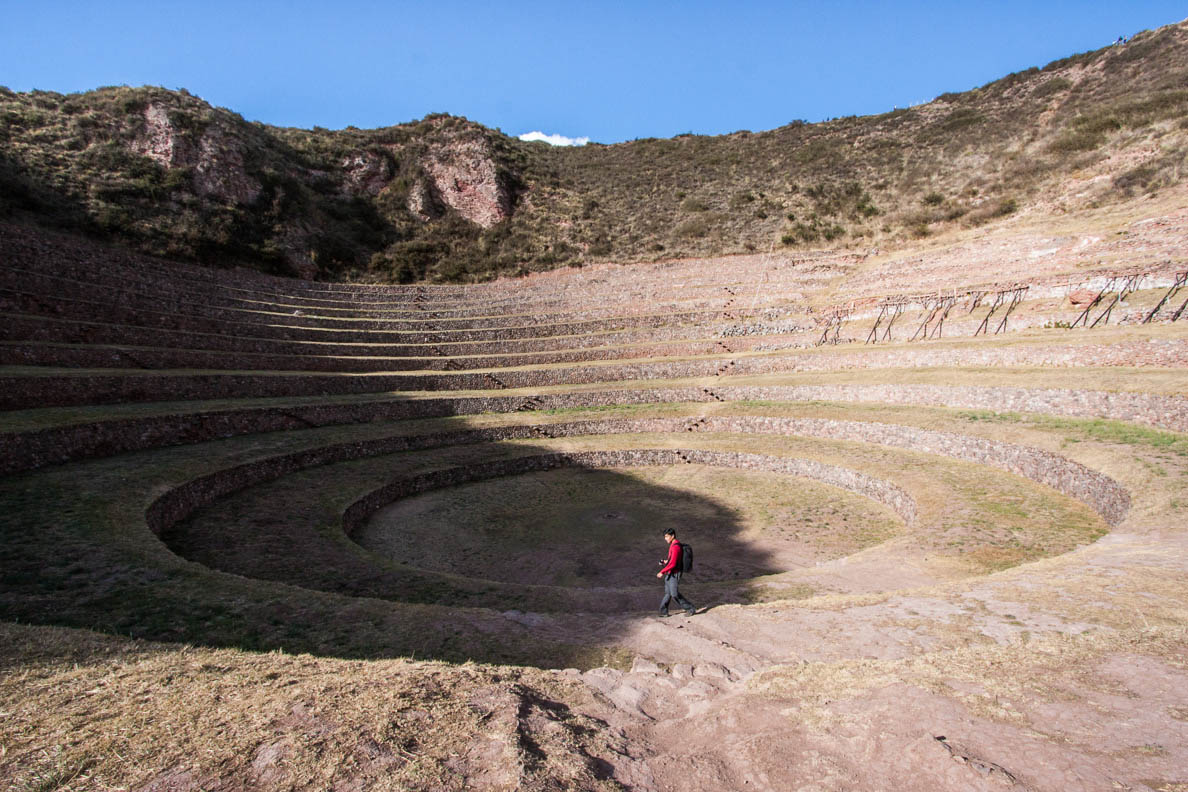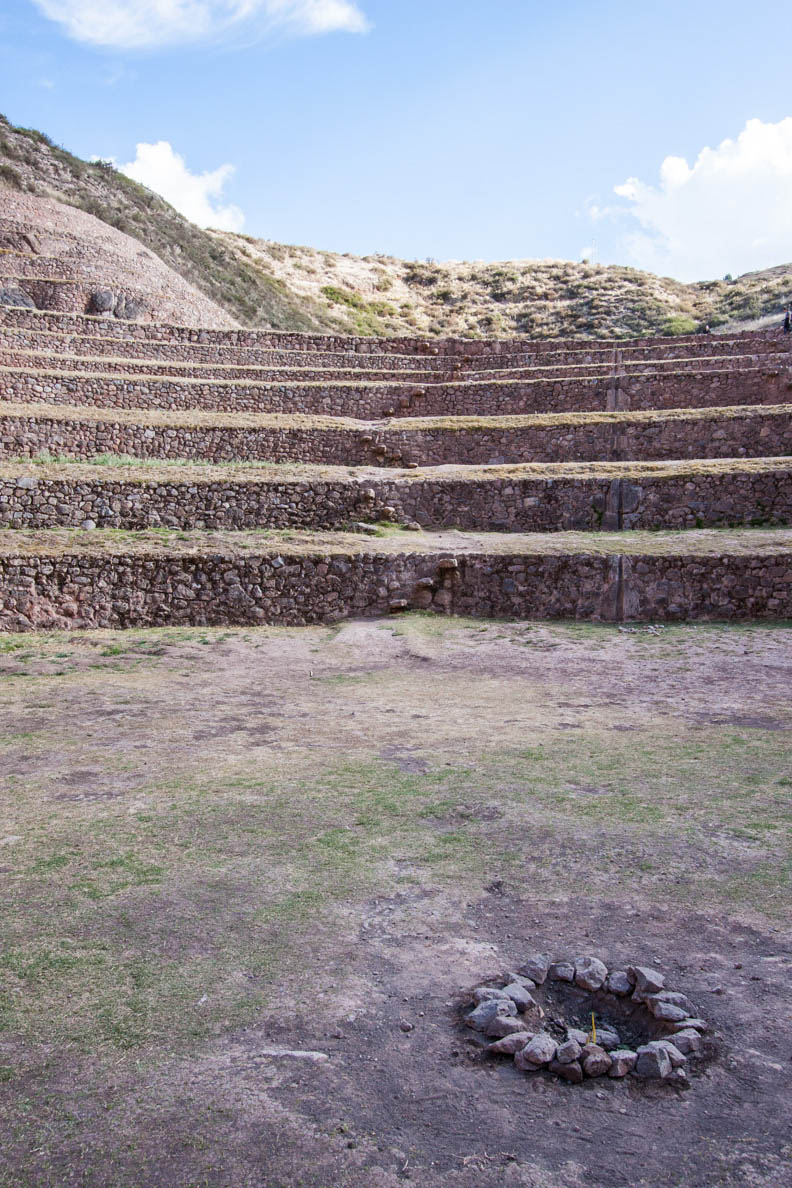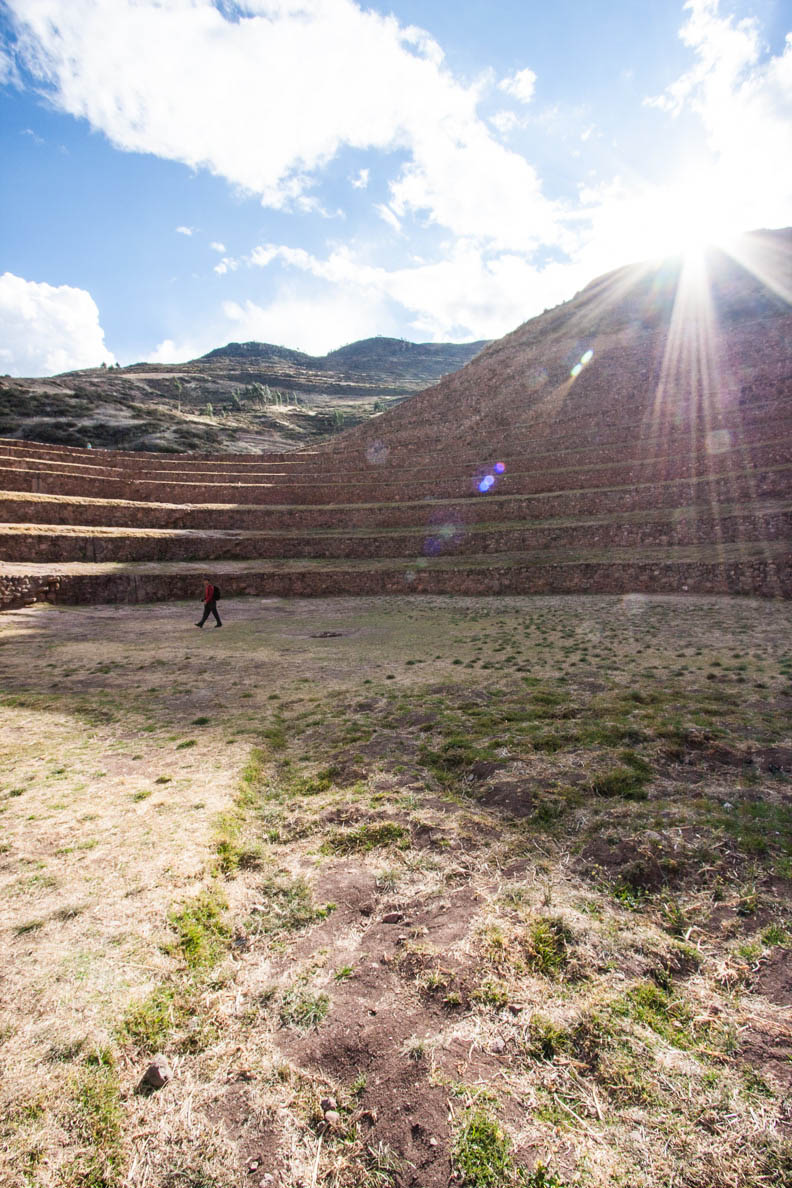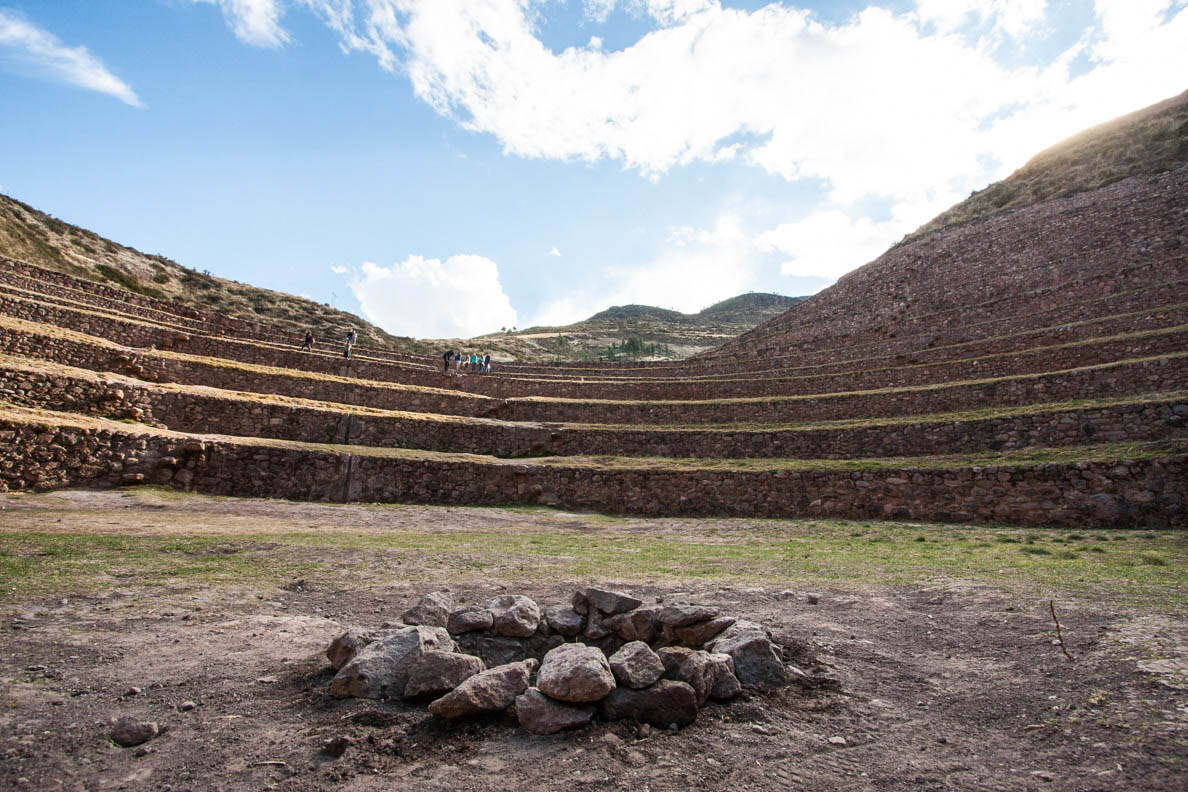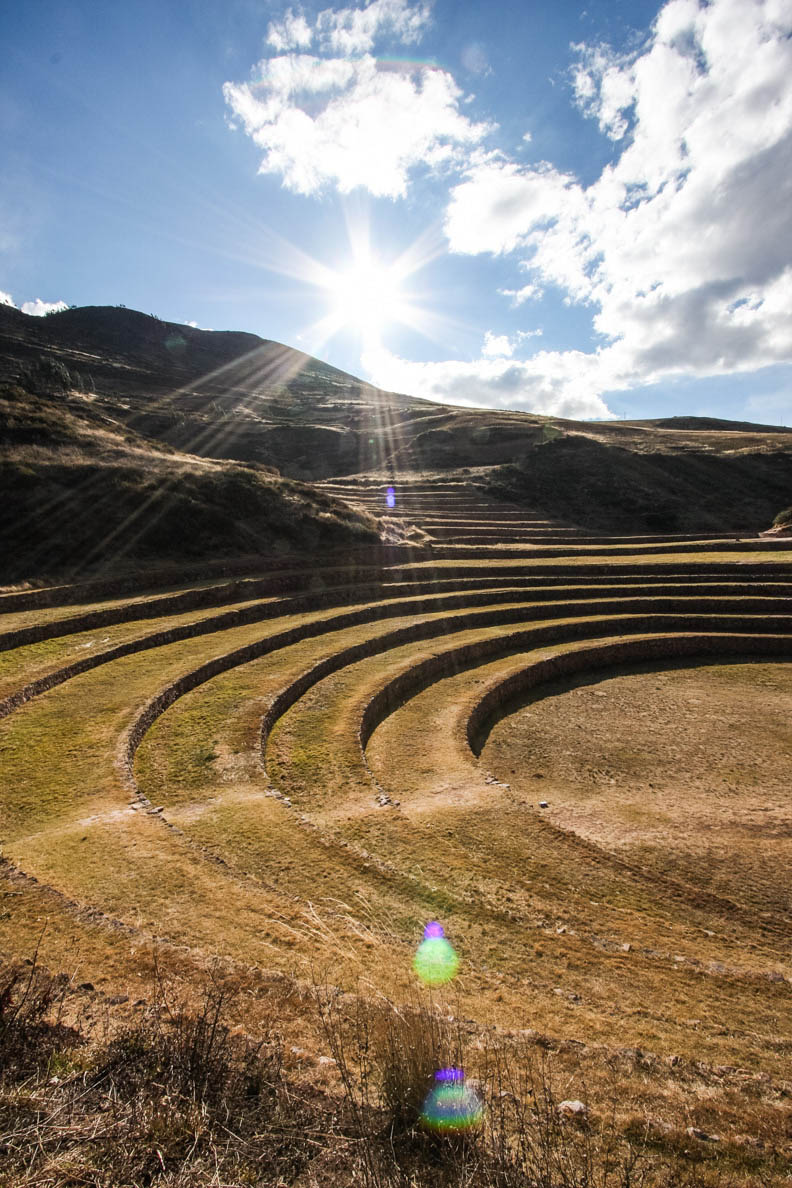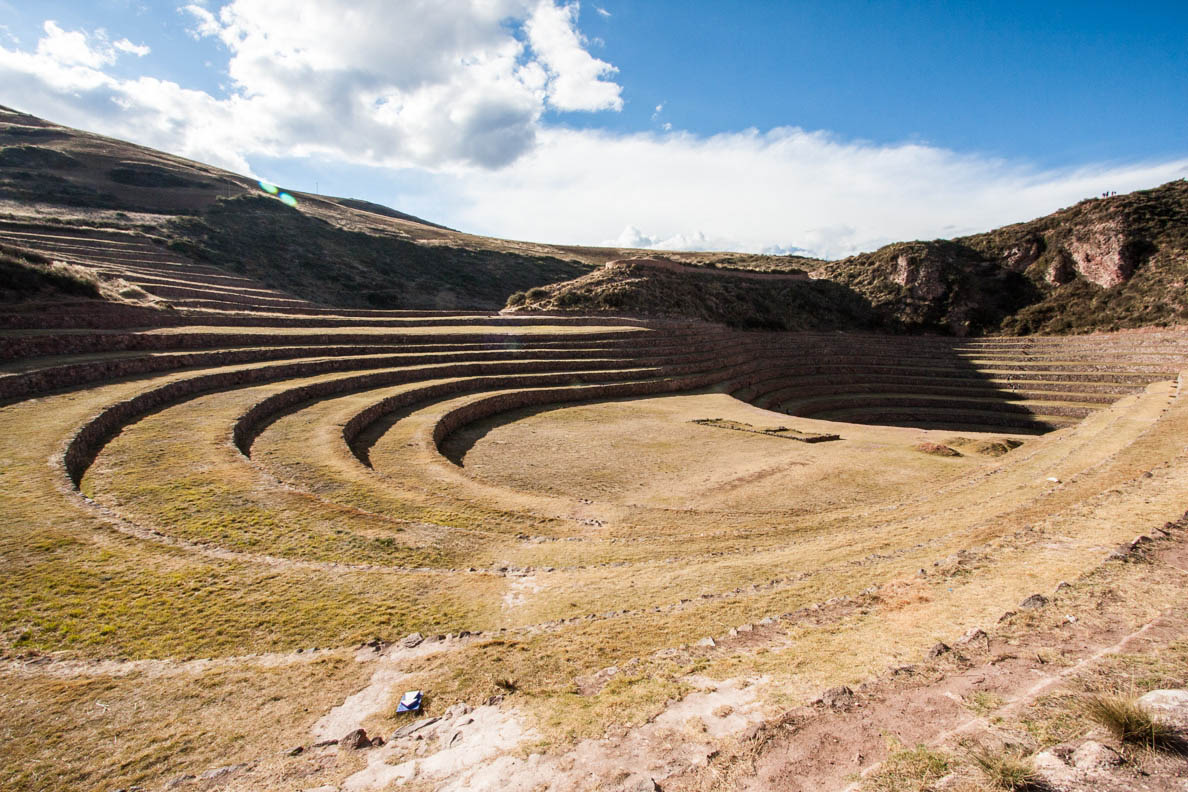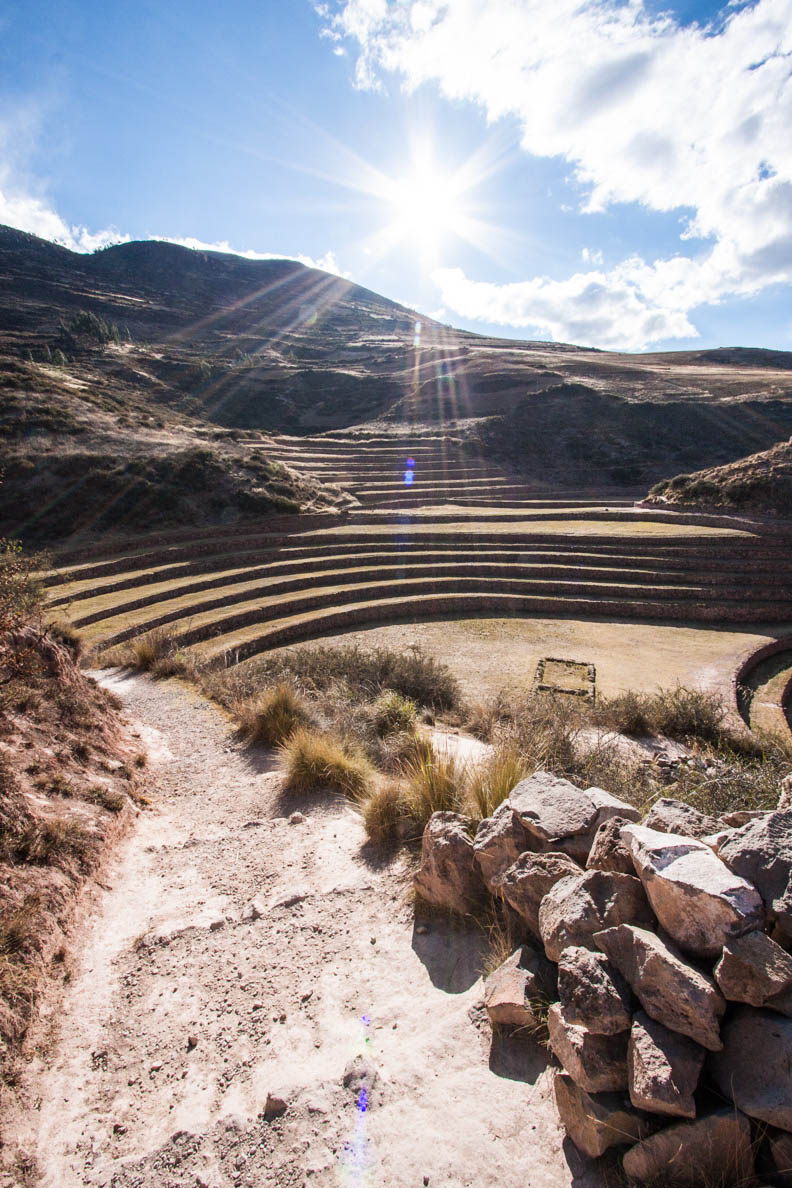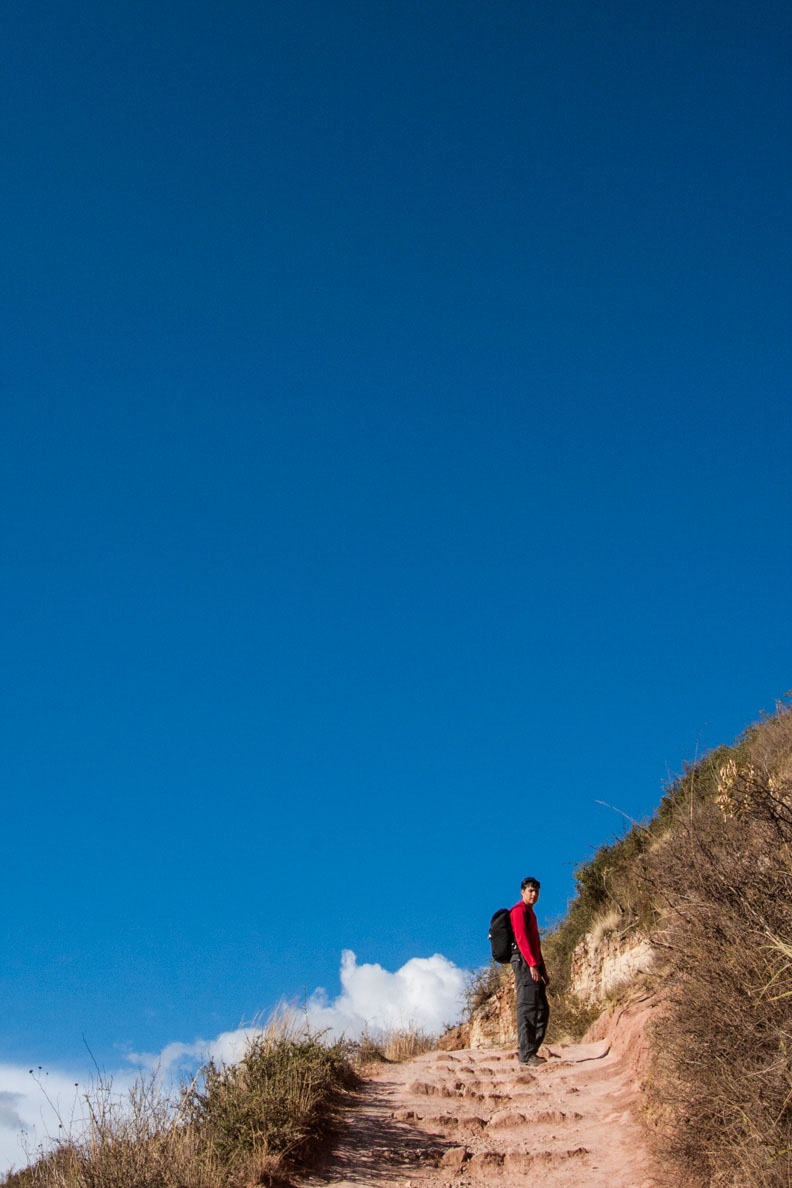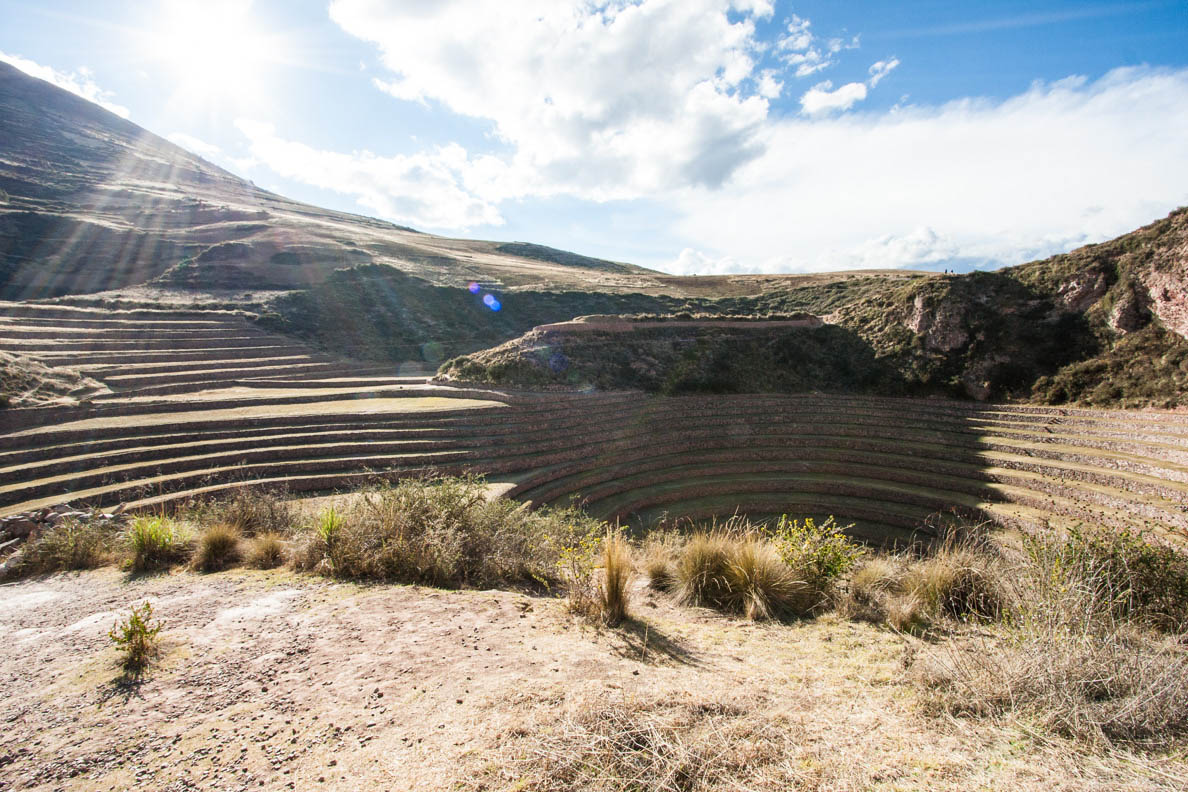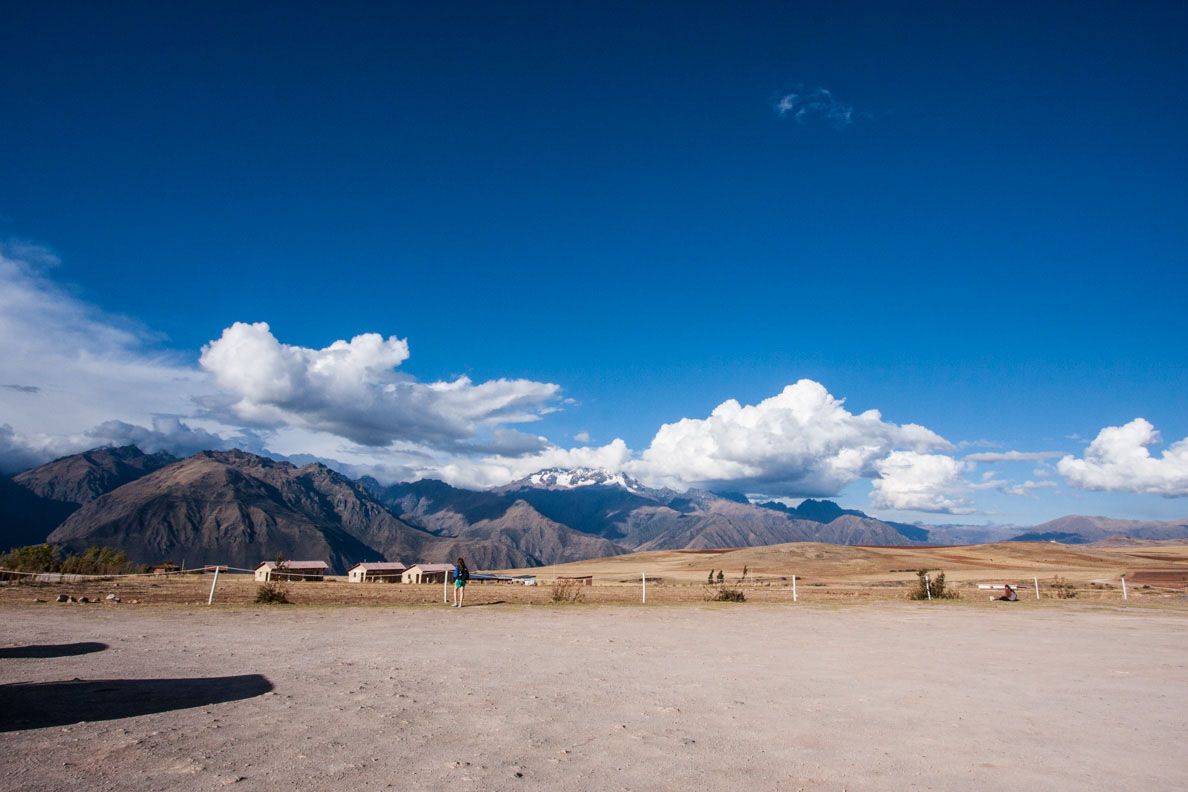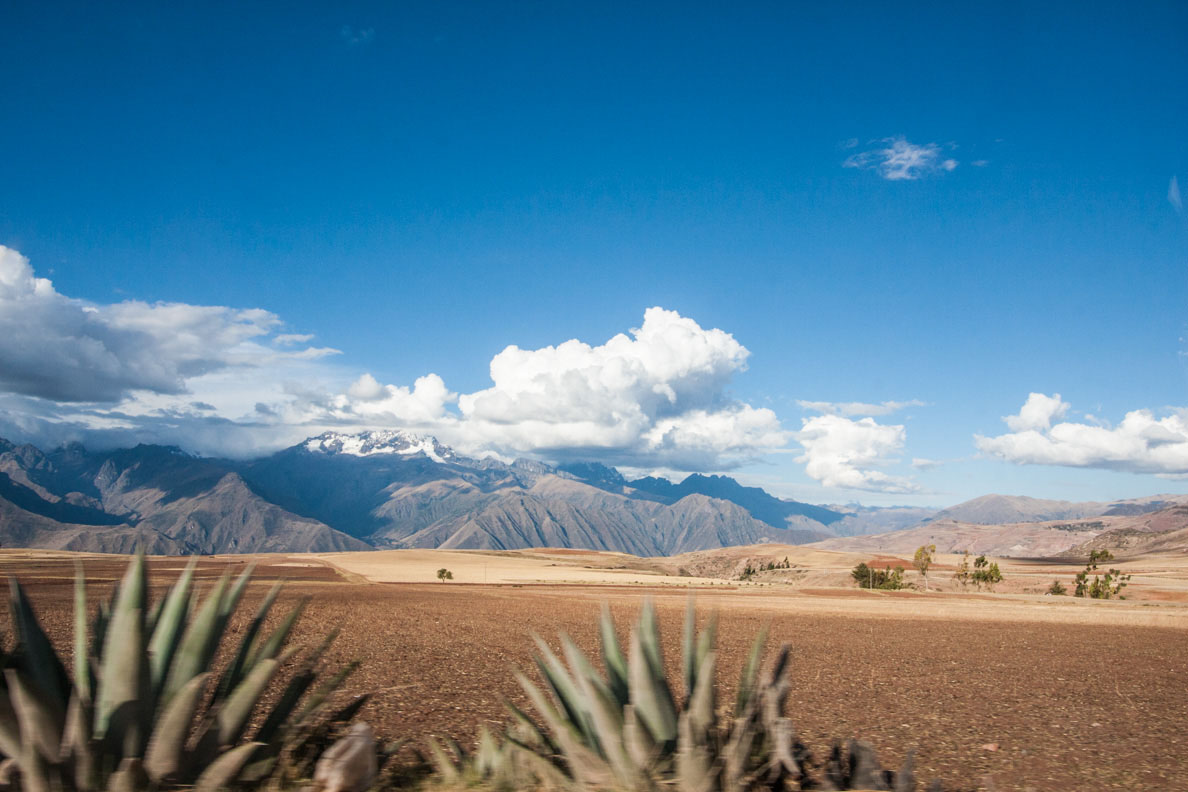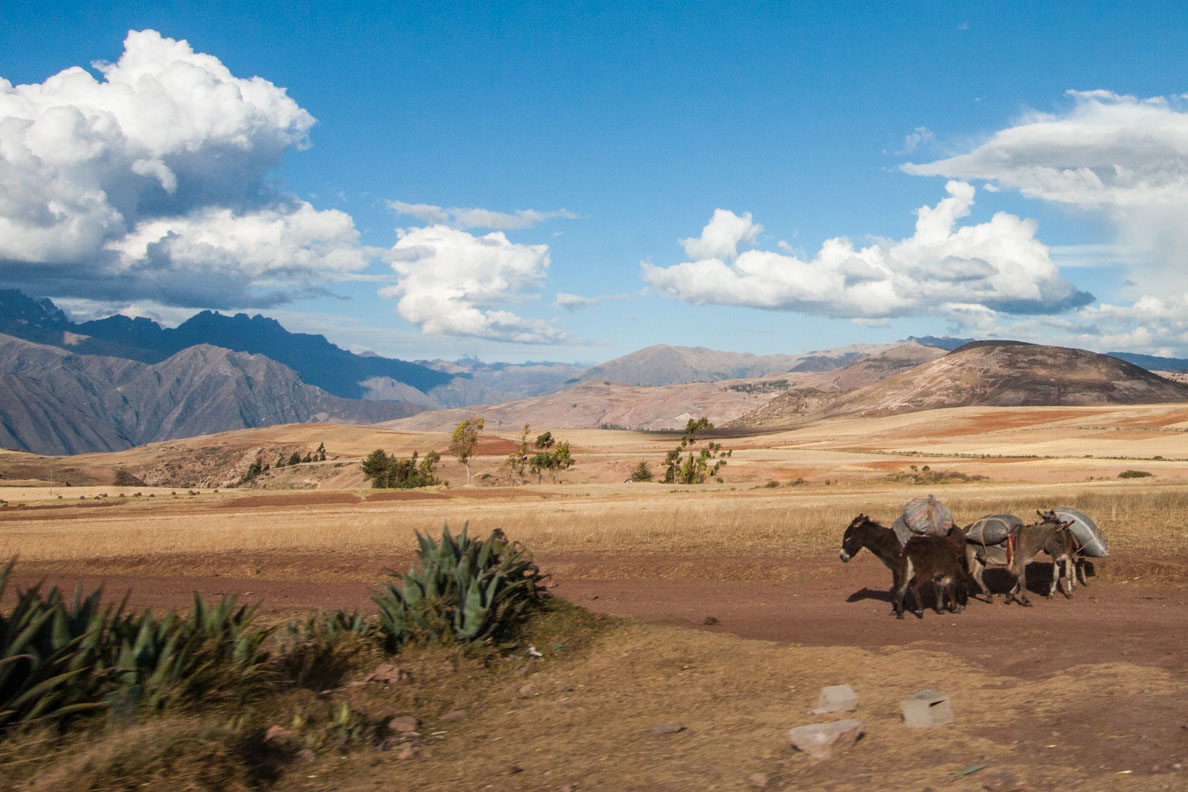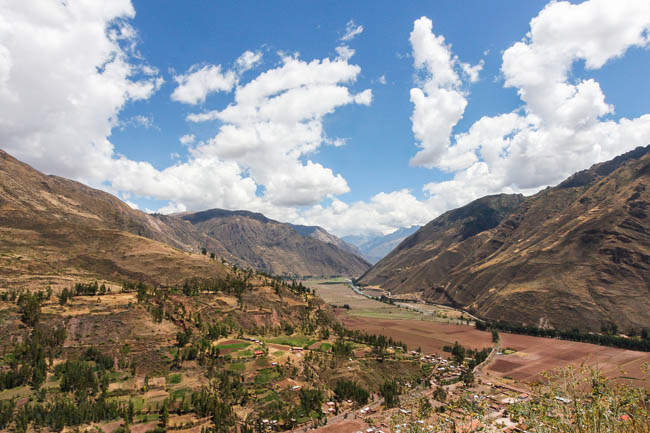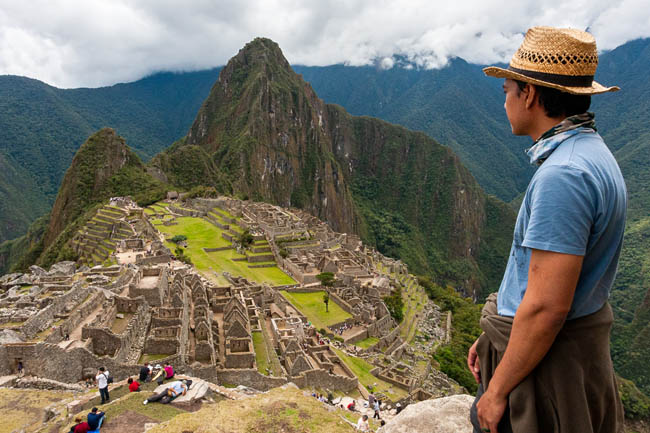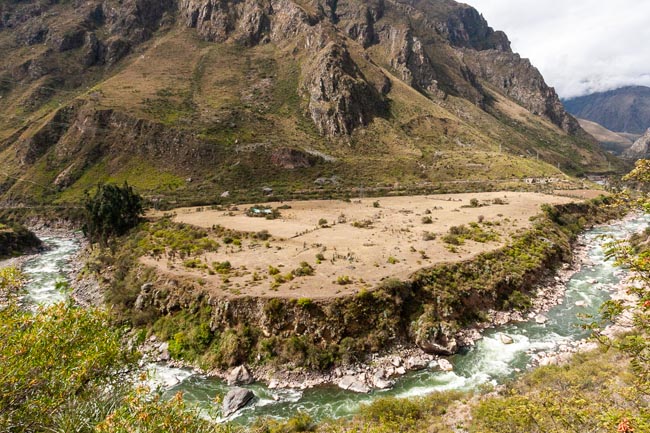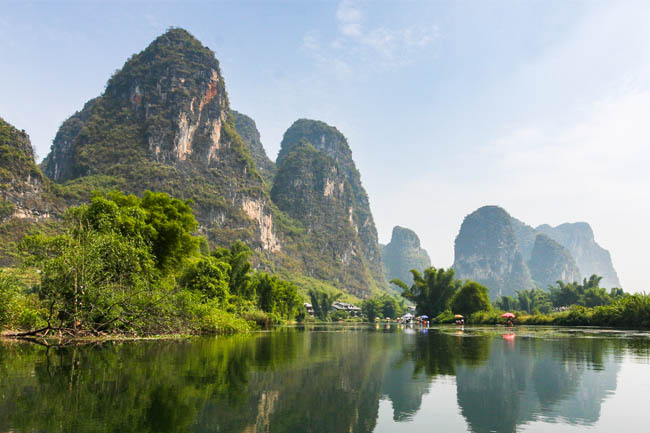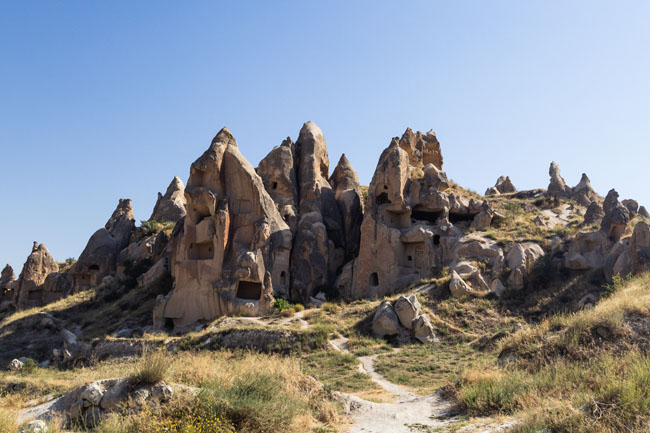PERU
CROSS COUNTRY
AROUND THE
SACRED VALLEY
September 2011 • Canon 40D camera
Biking stats
Distance (round trip)
Highest point
Duration
Today we had the chance to do some cross country mountain biking around Cuzco in the Sacred valley. It would encompass a mixture of different terrains, archaeological sites and magnificent landscapes. The itinerary was to start in the small Andean village of Chinchero and cycle through to the Salt mines of Maras and finally reaching the Inca ruins of Moray. It was a nice sunny morning as our driver drove us to Chinchero, thirty kilometers north of Cuzco over the sacred valley.
Here we collected our mountain bikes to begin our cross country experience. Around 9 am we put our cycle helmets on, clicked our gears into place and begun our ride into the Andean landscape. Our guide (sorry I had forgotten his name!) gently lead the way. I had not eaten any breakfast this morning except for a cup of tea. I was already feeling hungry by the time we had got on our bikes and started paddling through the small village to the outskirts.
I hoped this cycling route would be just as fun as the cycling tour I did in China. We started off on a dusty, stony road. The flat agricultural landscape surrounded us with the open mountain range to the distance. Every once in a while we we cycled through muddy patches. We passed cows grazing along with the odd local farmers working in the fields. “Hola” I shouted as I cycled passed people.
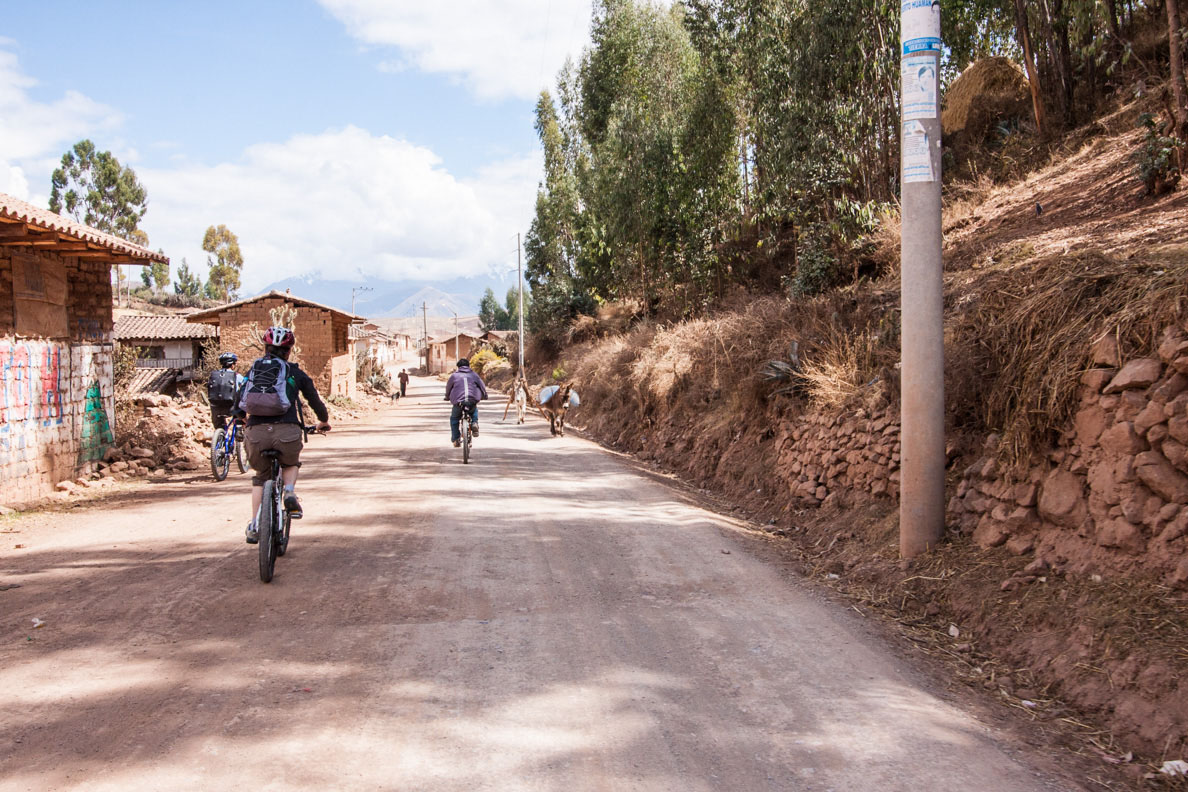
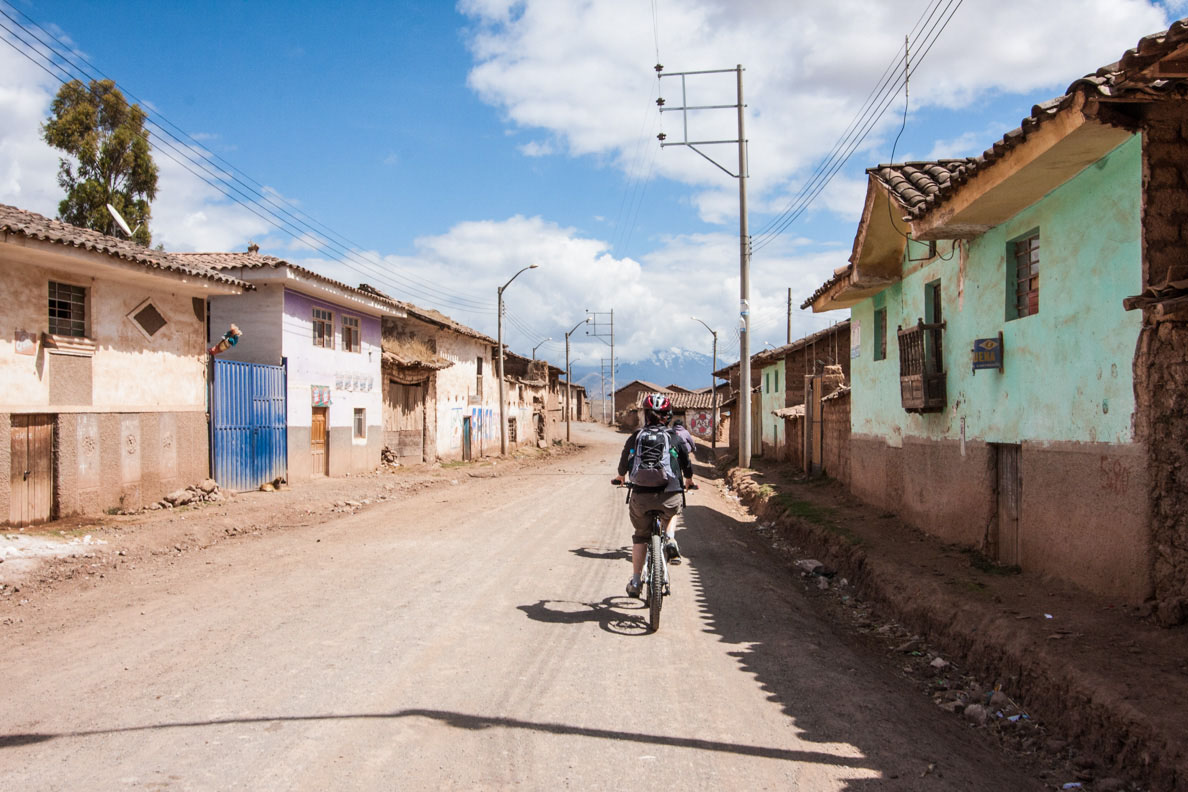
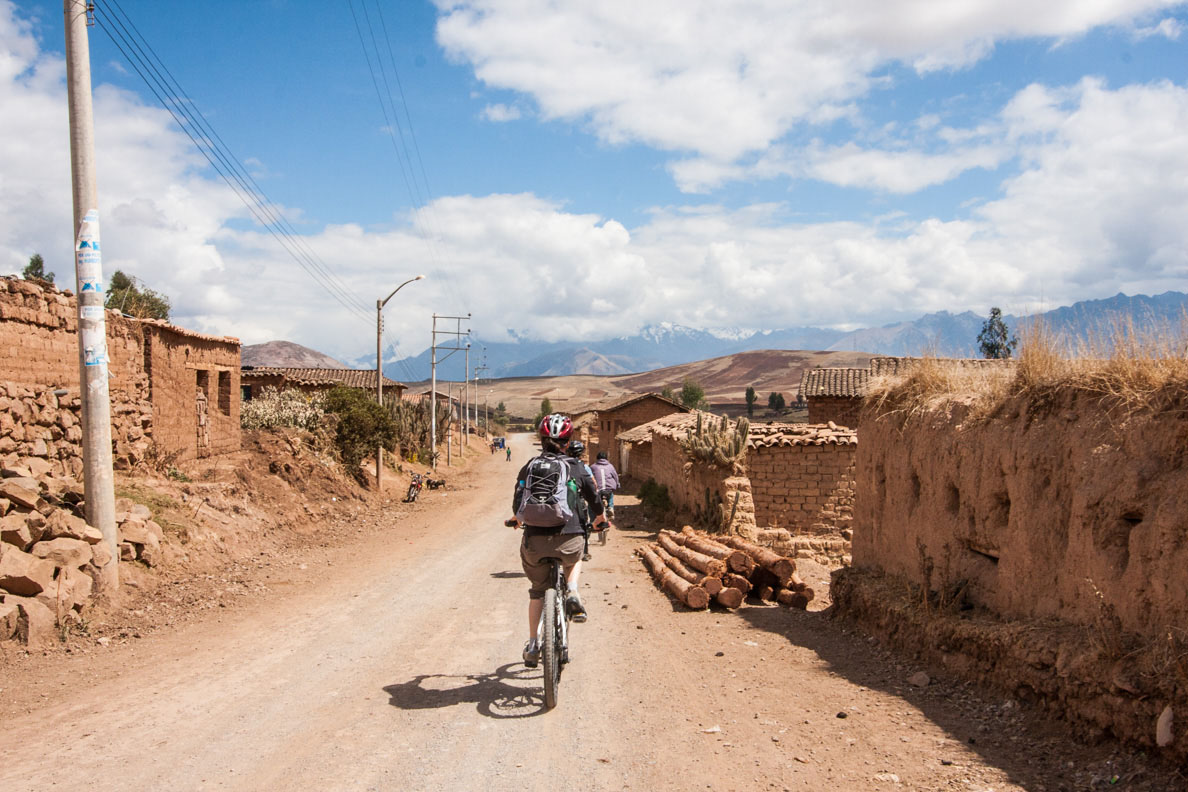
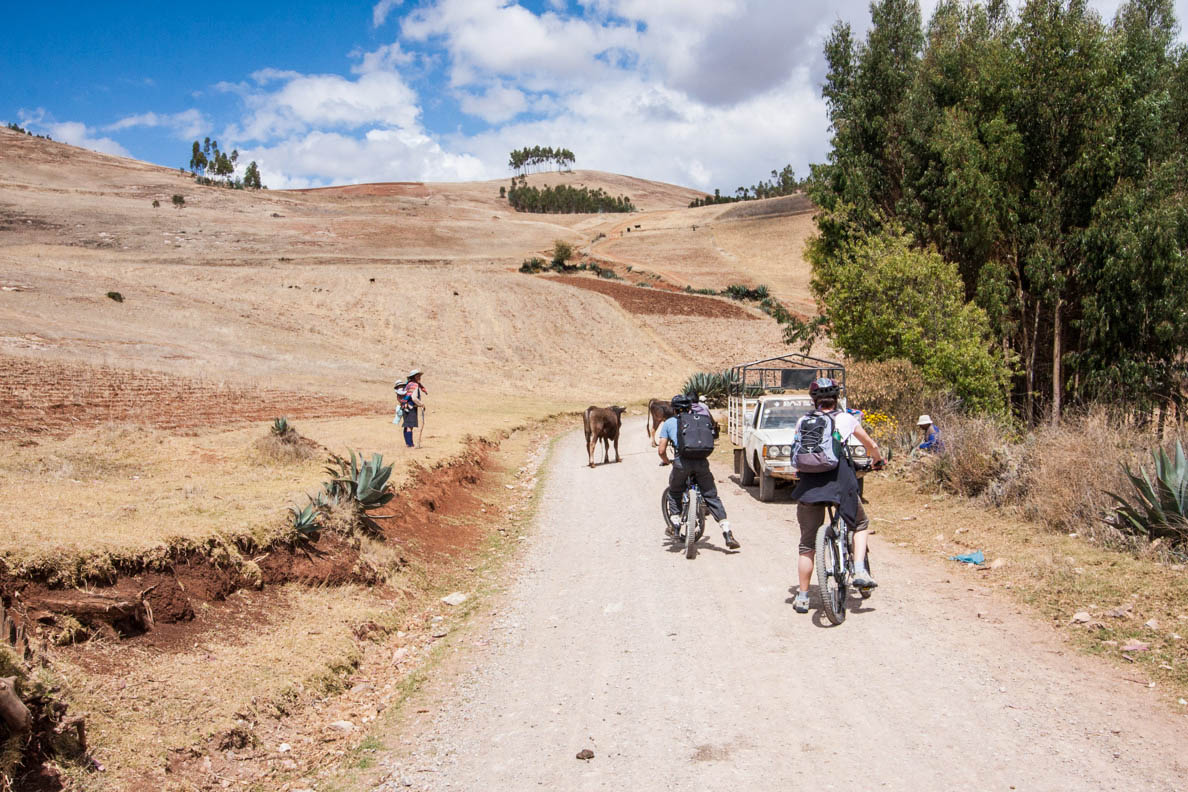
The open road
Leaving the village area we were greeted with the large dusty open road. The massive snow–capped mountains of the Urubamba range surrounded us. I felt so small. Heavy swirling clouds covered us from above with the sun and blue skies shining down on us whenever there was a break in the clouds. It was hot... and we were high up in altitude... should have brought sunscreen! It was quiet and peaceful as we cycled on the road. Every once in a while a short gust of wind blew ahead of us.
Along the route, we cycled through a tiny village of a few houses that laid out mud bricks baking hard in the sun. The route was now in some places elevated, so at some points it was easier to get off our bikes and slowly walk up before cycling again. We passed a few people walking the dirt road from time to time but rarely did we see any kind of vehicle. There was a group of horse riders at one point that appeared from the horizon like they just came out of a Hollywood western movie. Several times I attempted to film the scenery while I was riding but the terrain made it difficult with the uneven surface. I ended up just stopping to take video footage and photos once in a while.
